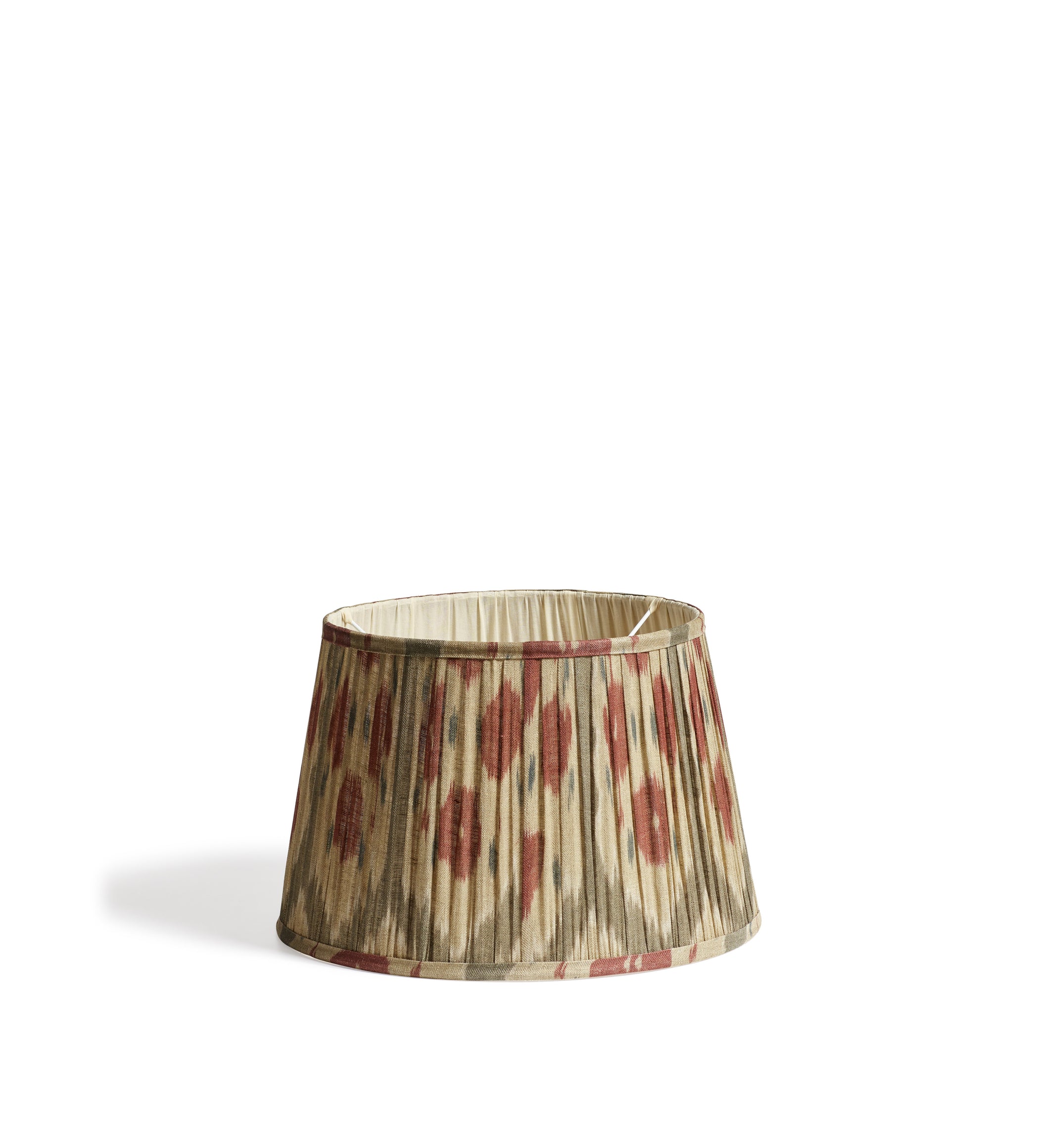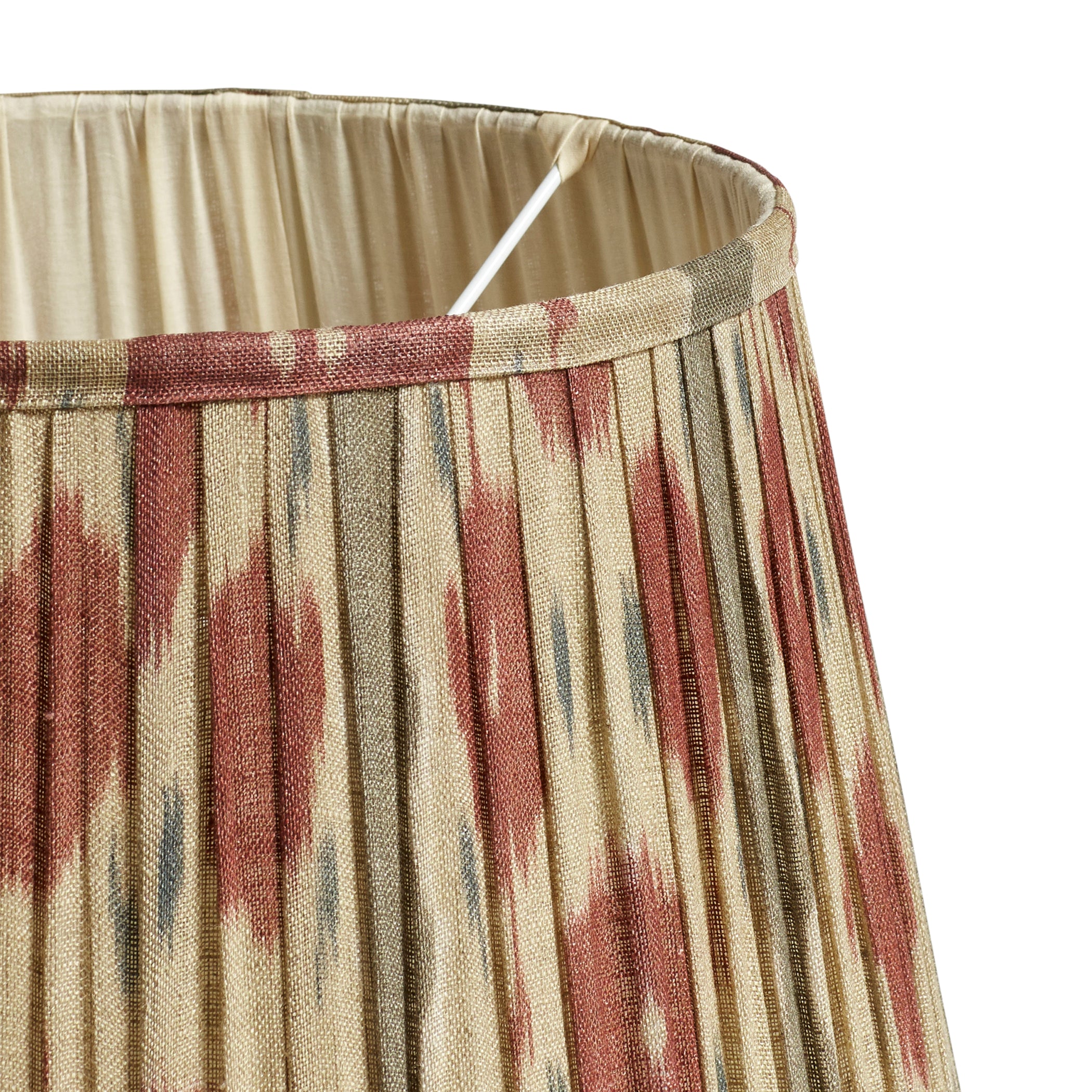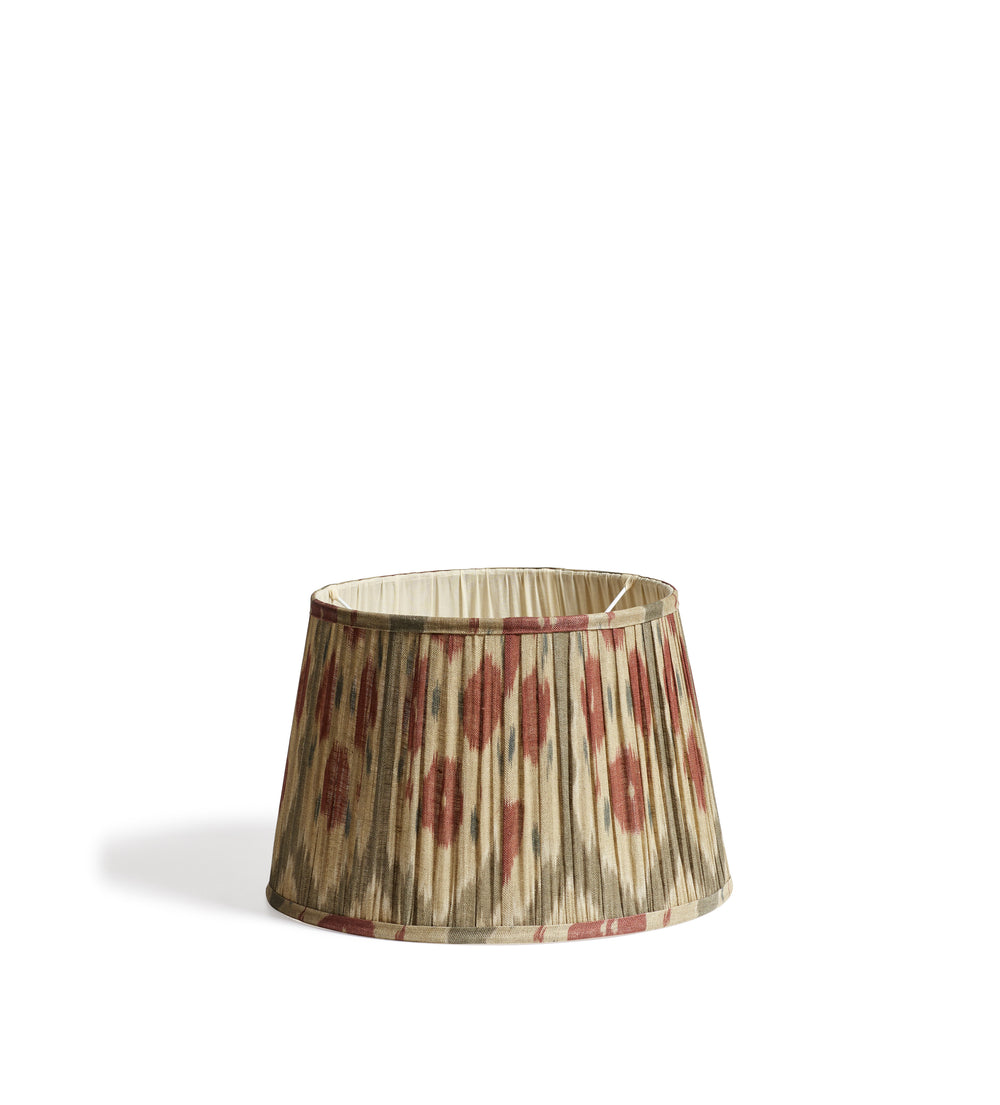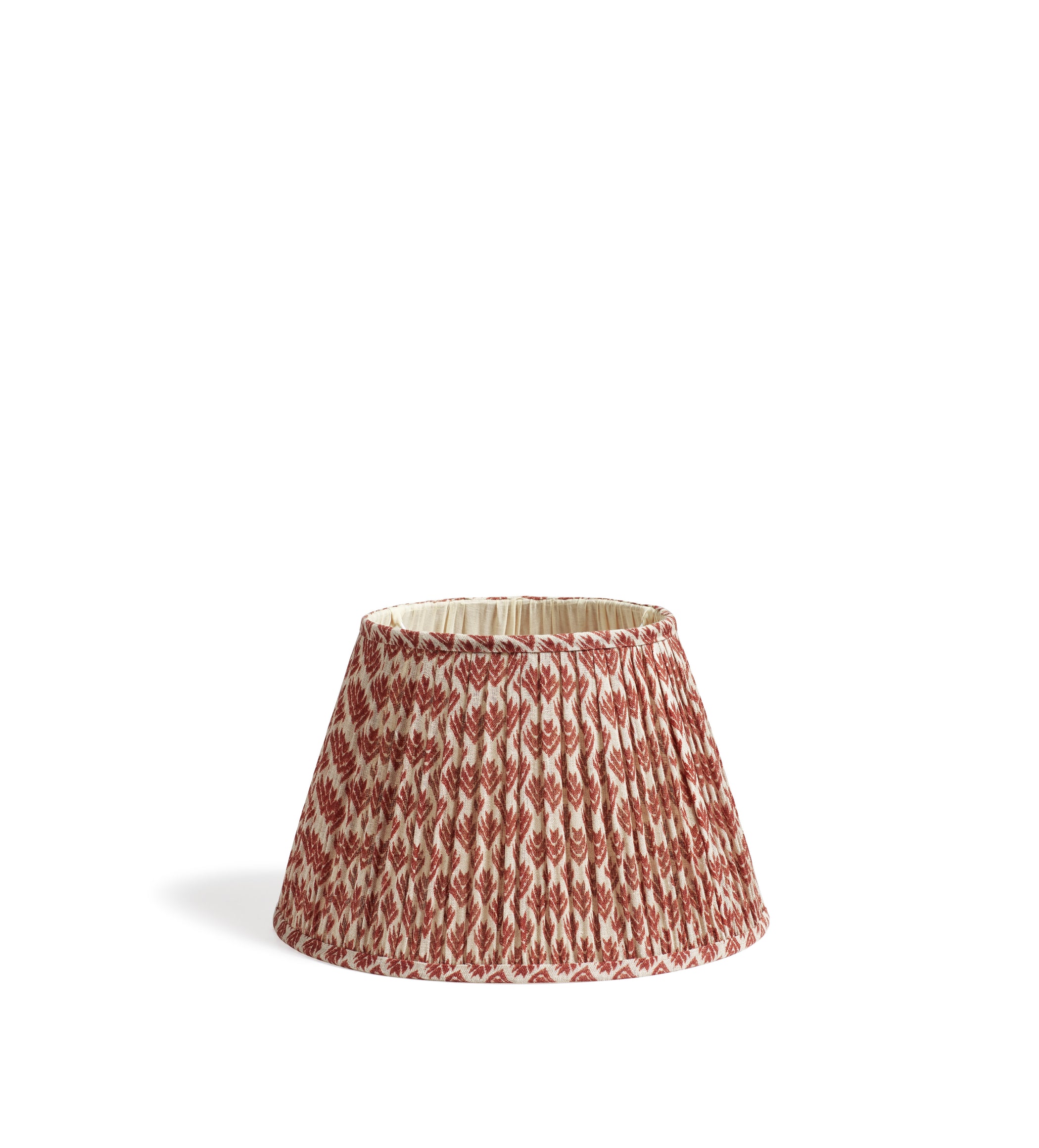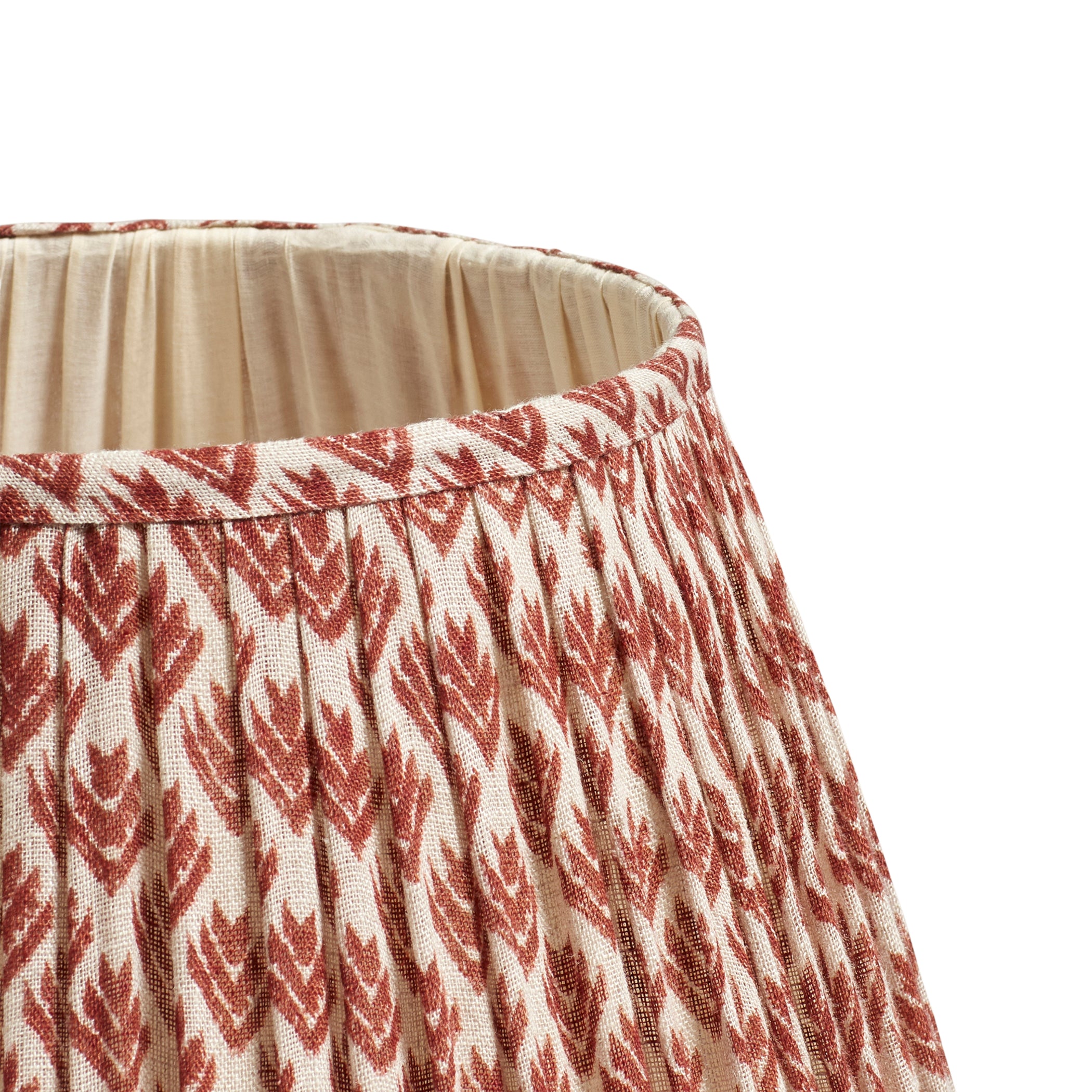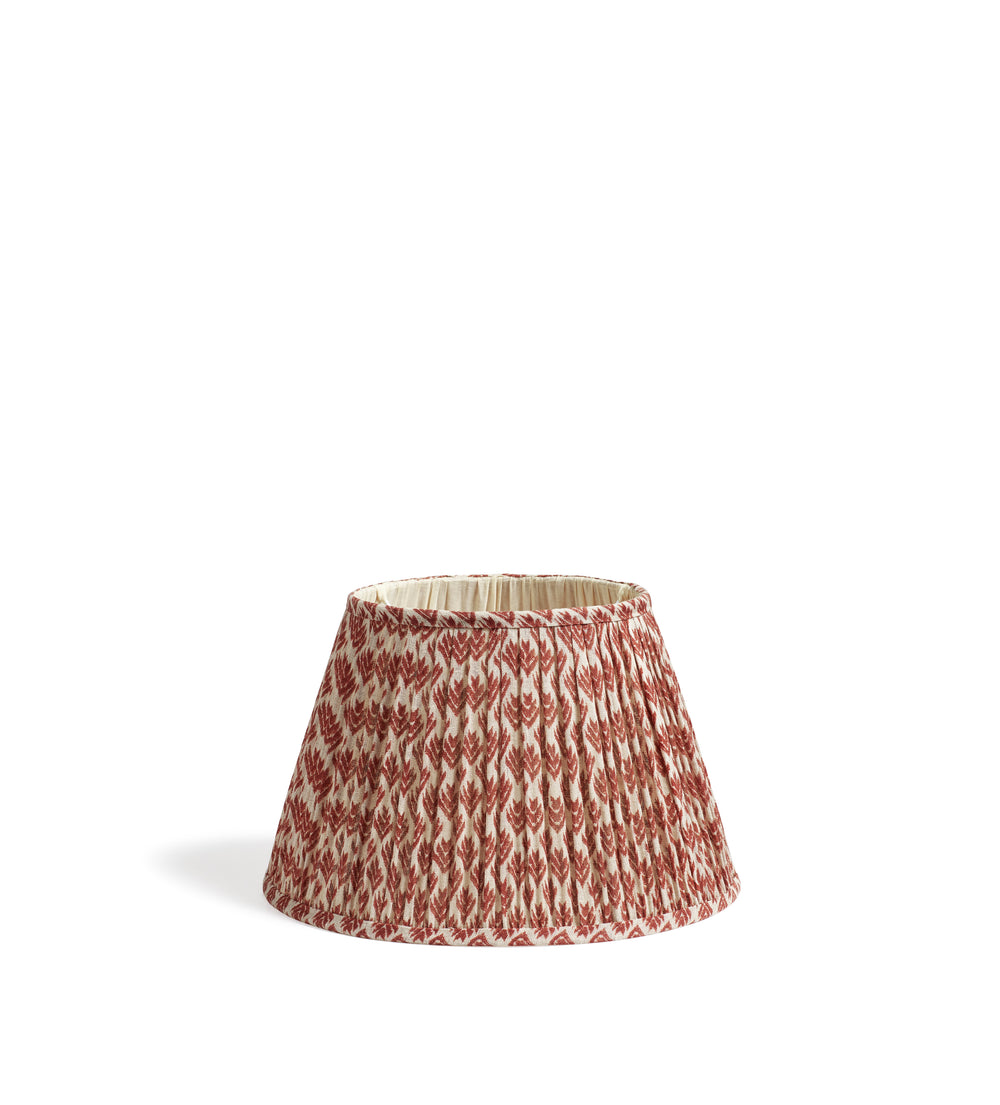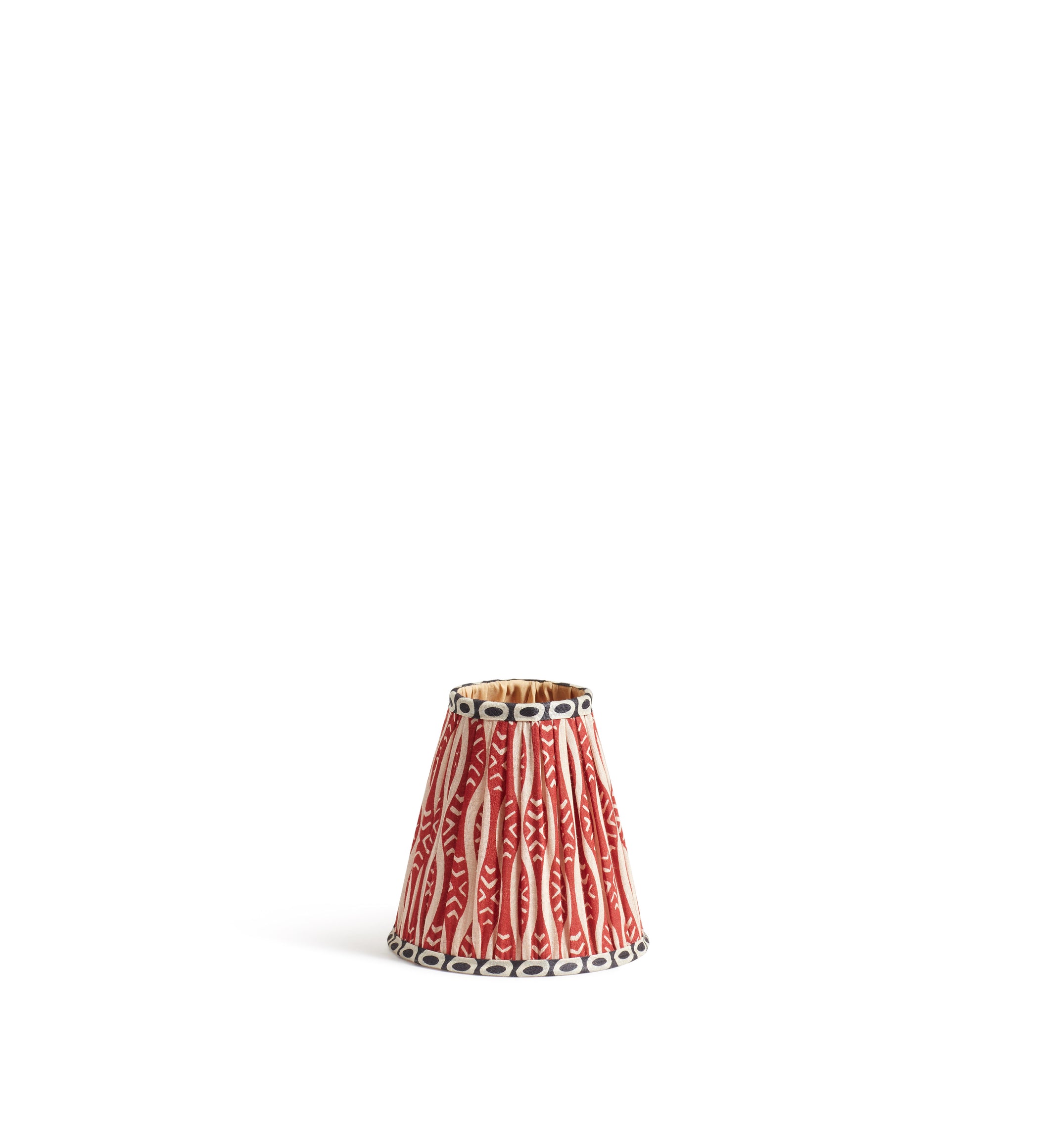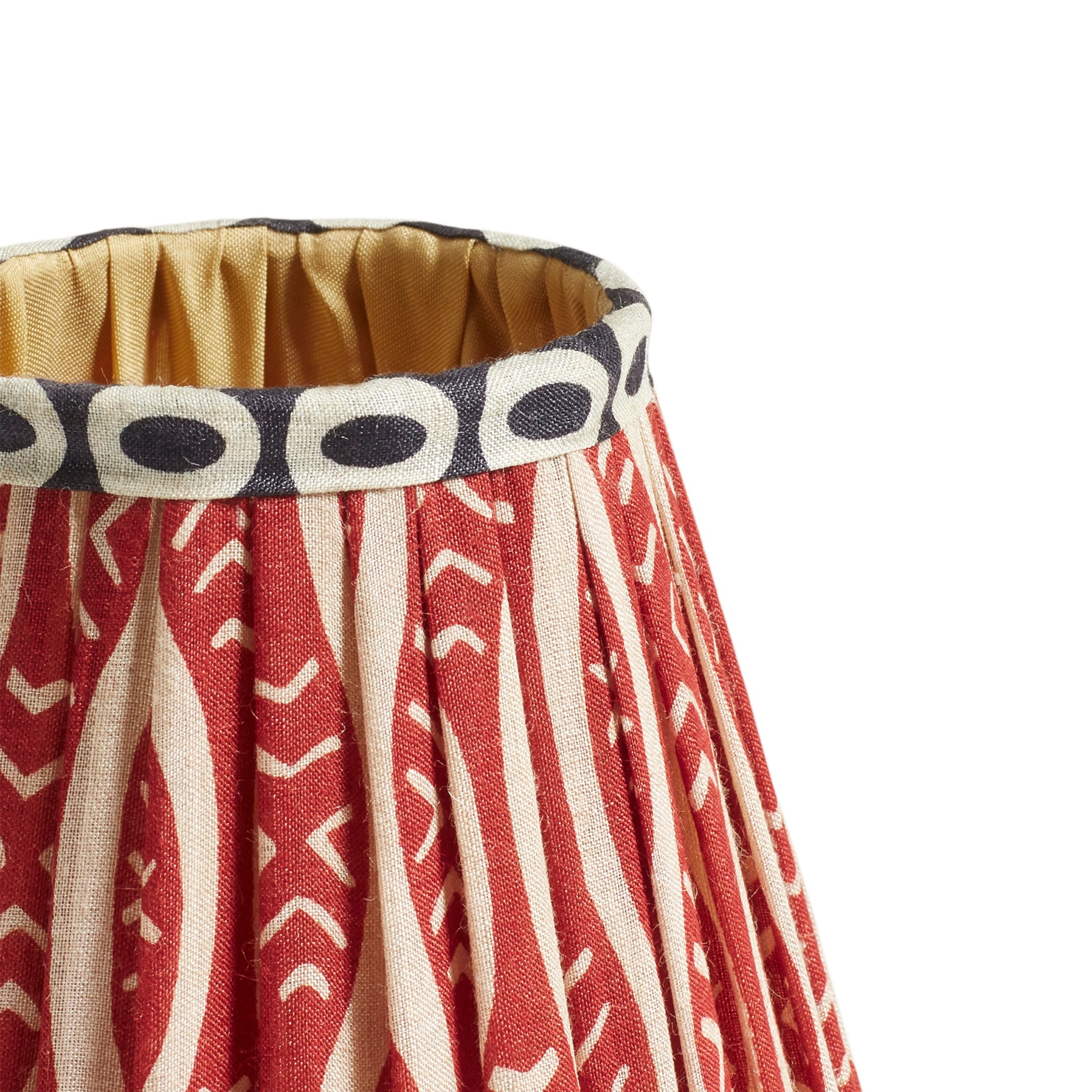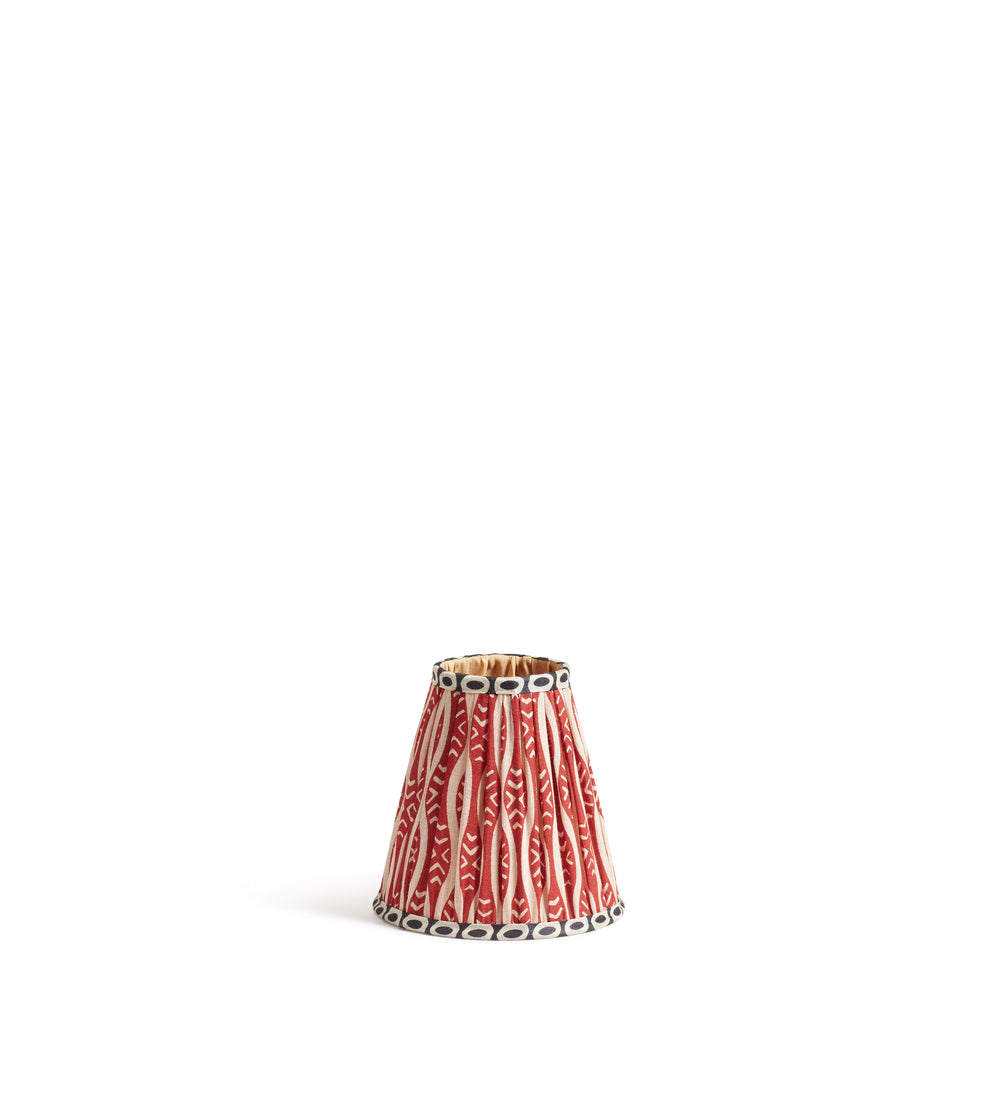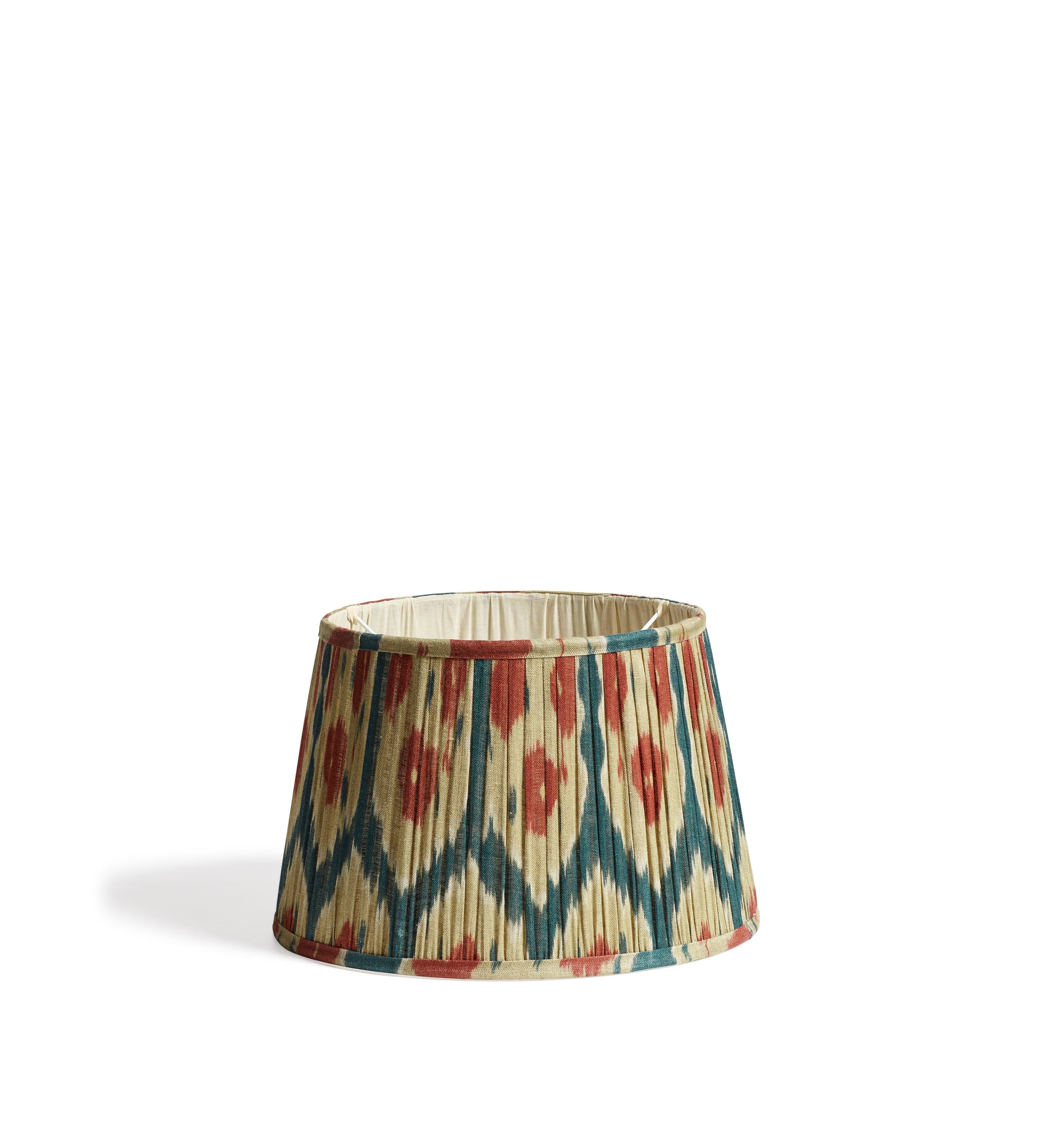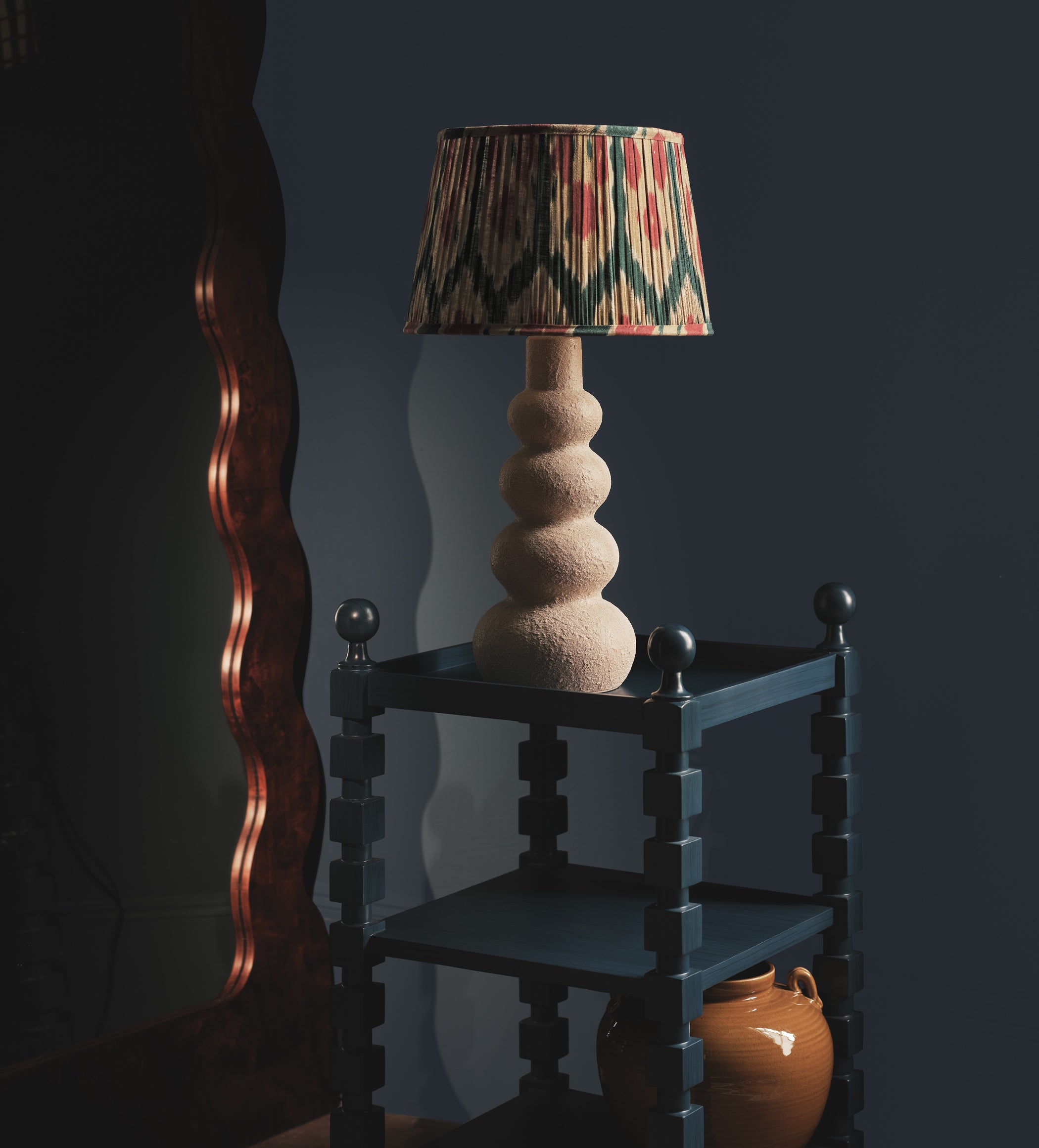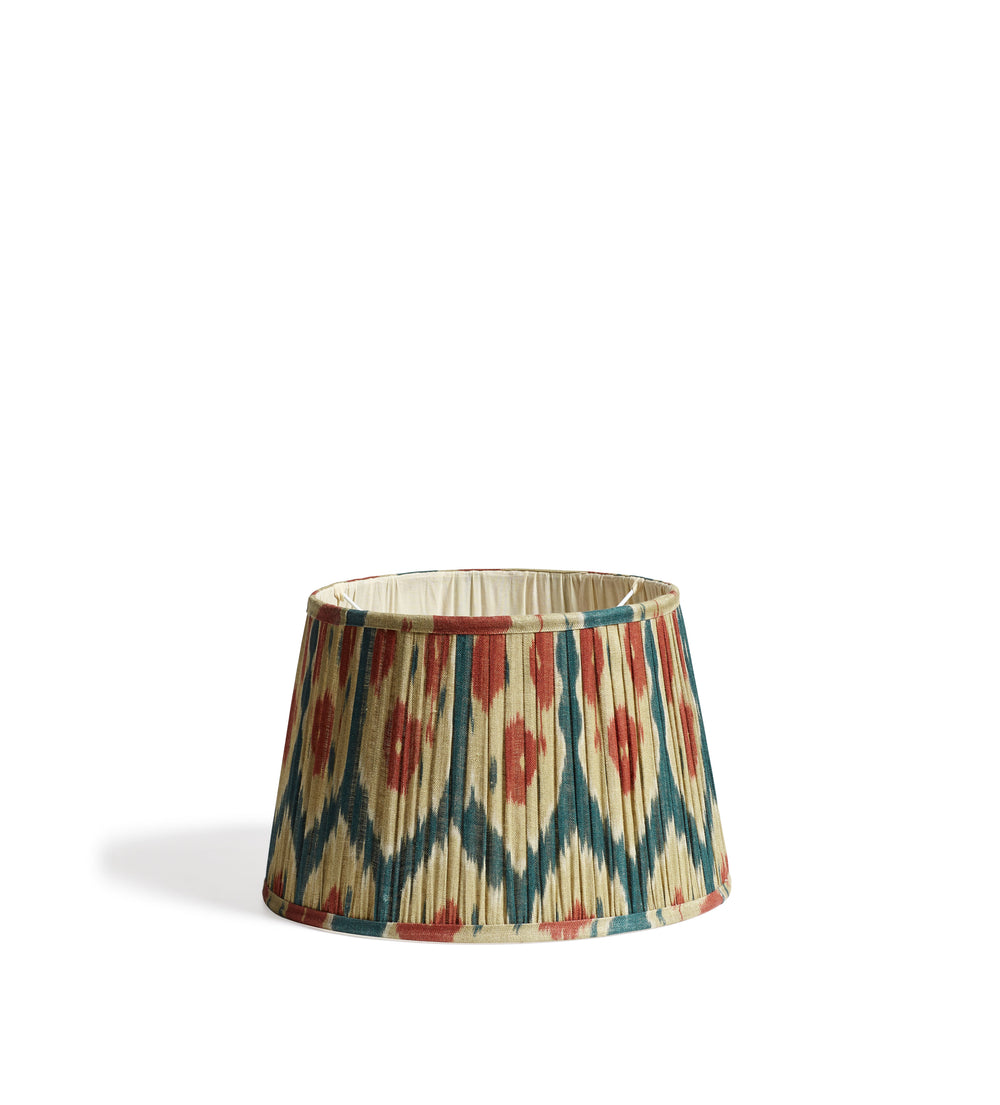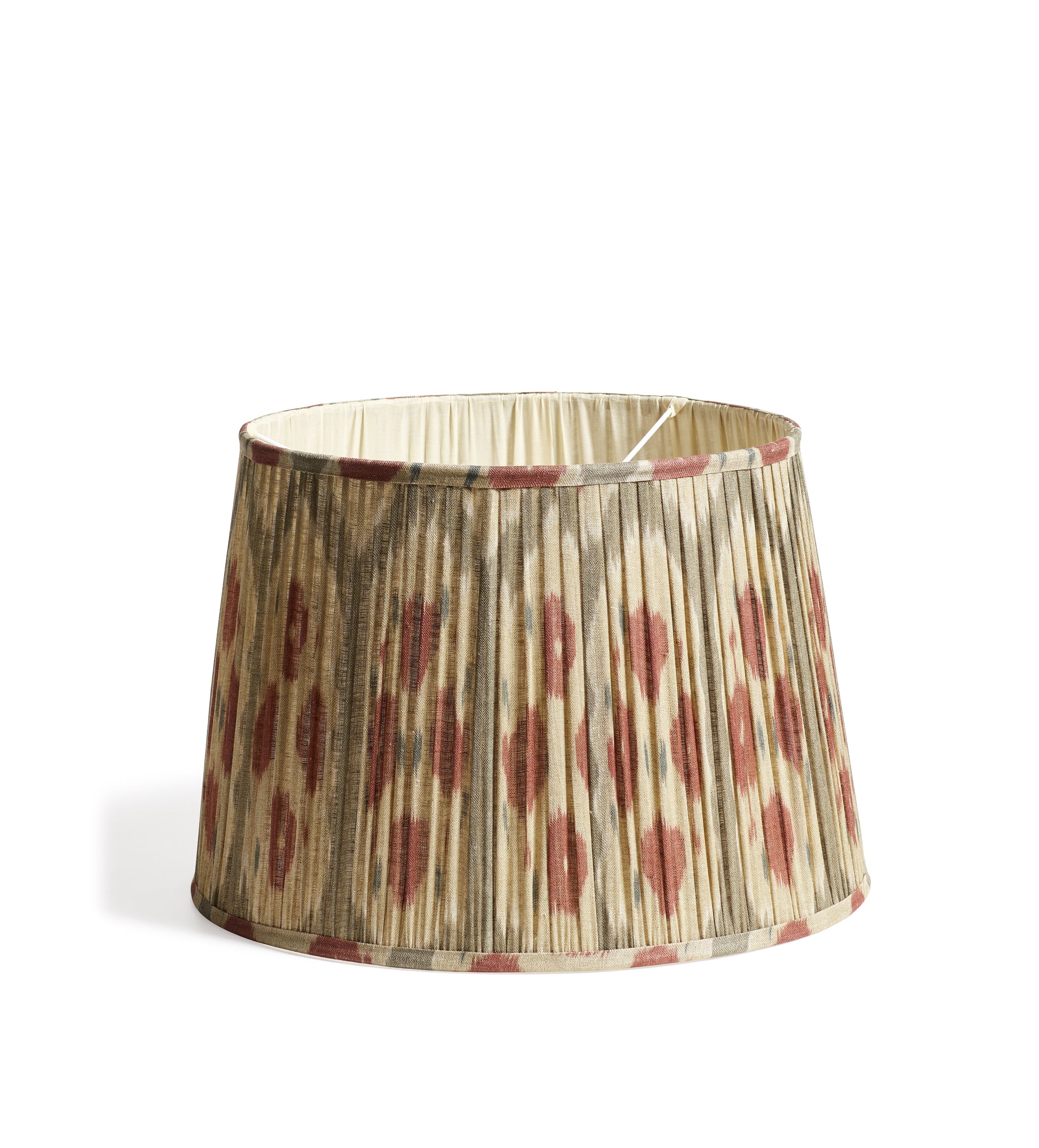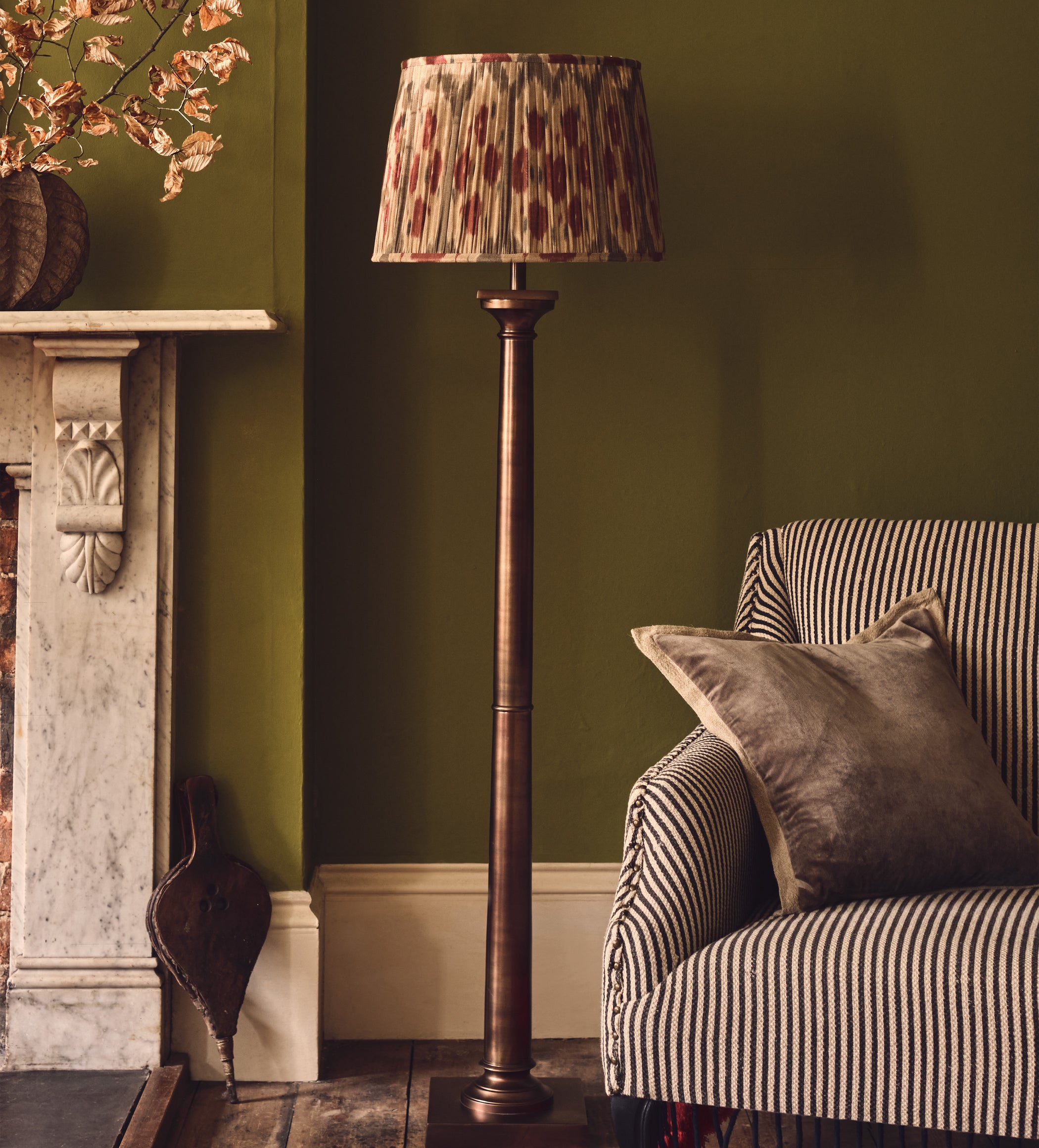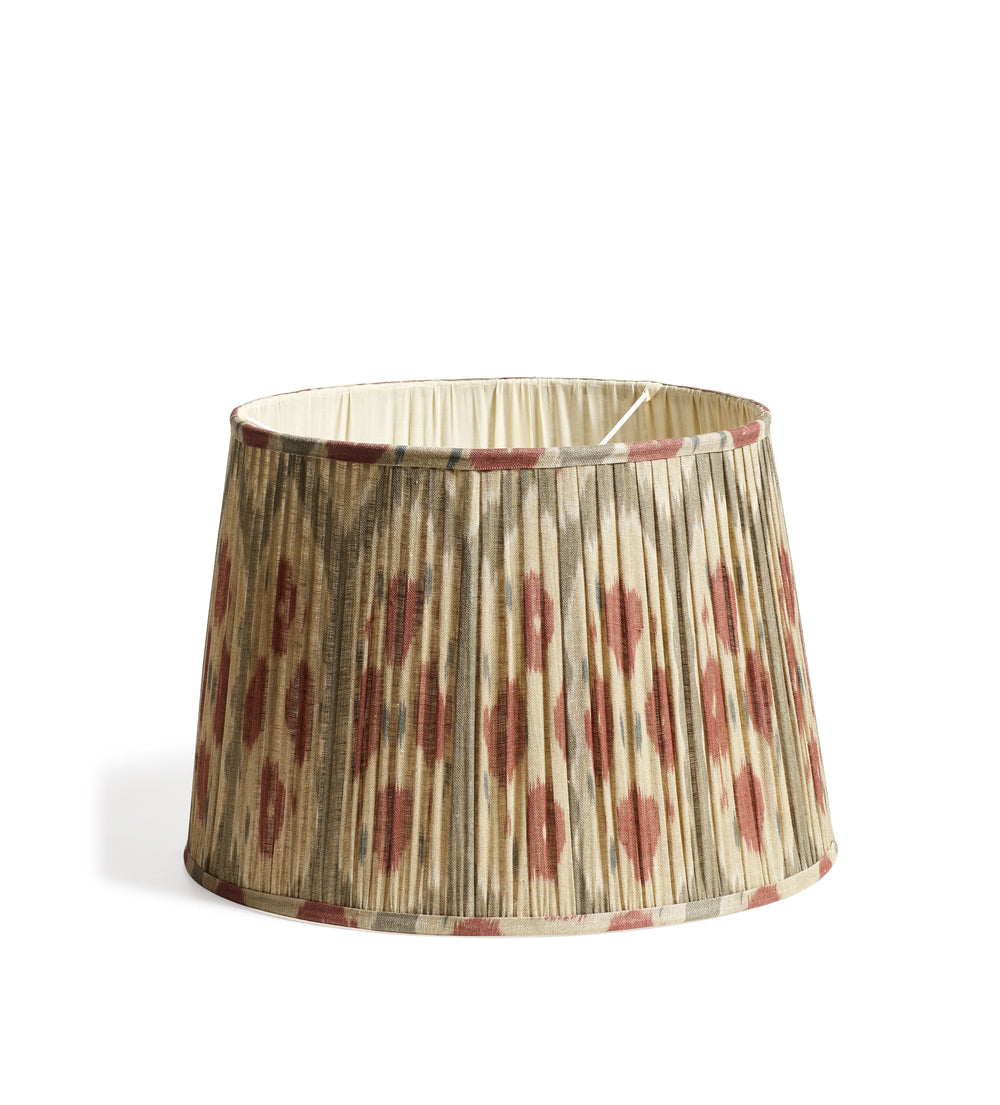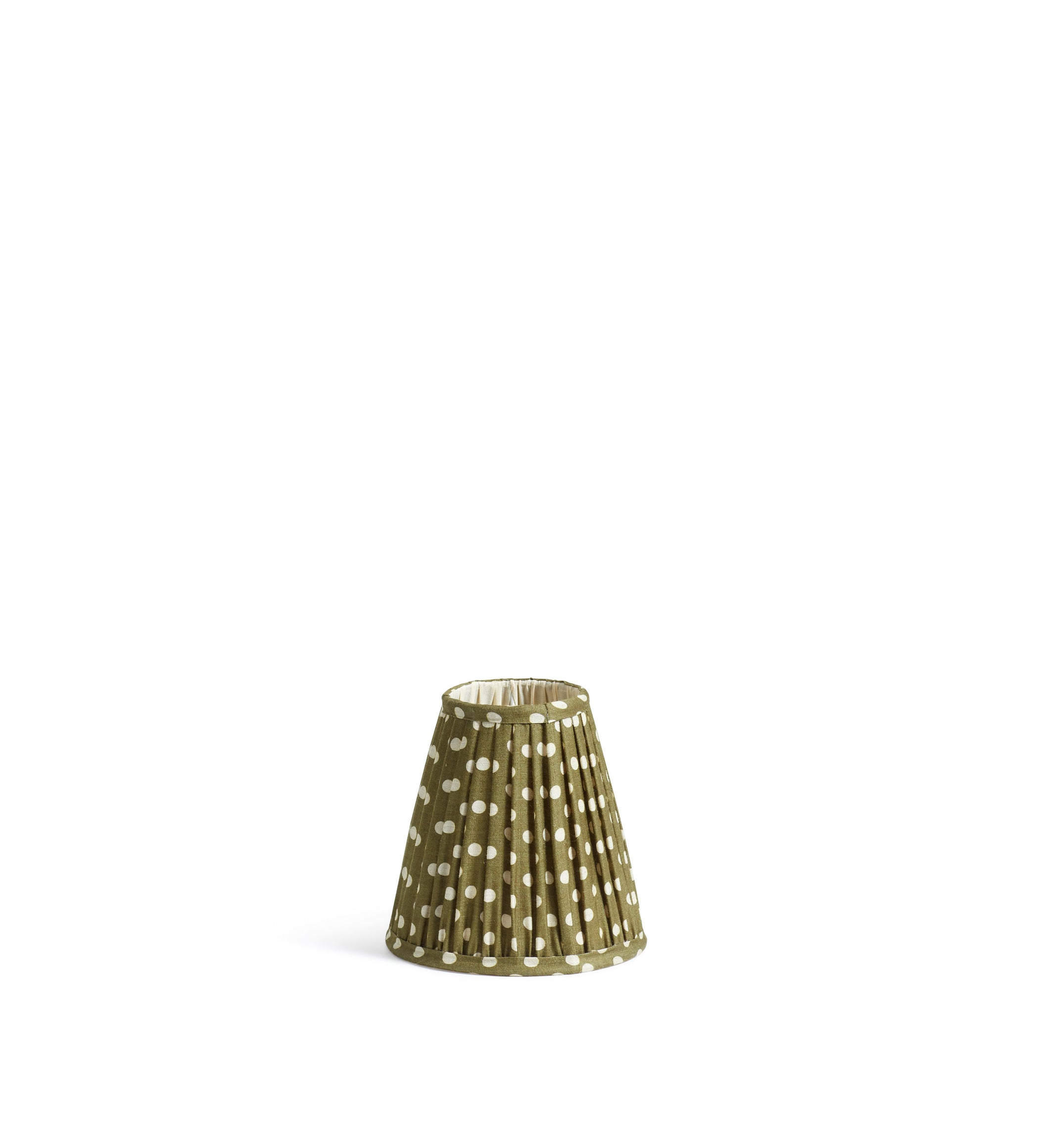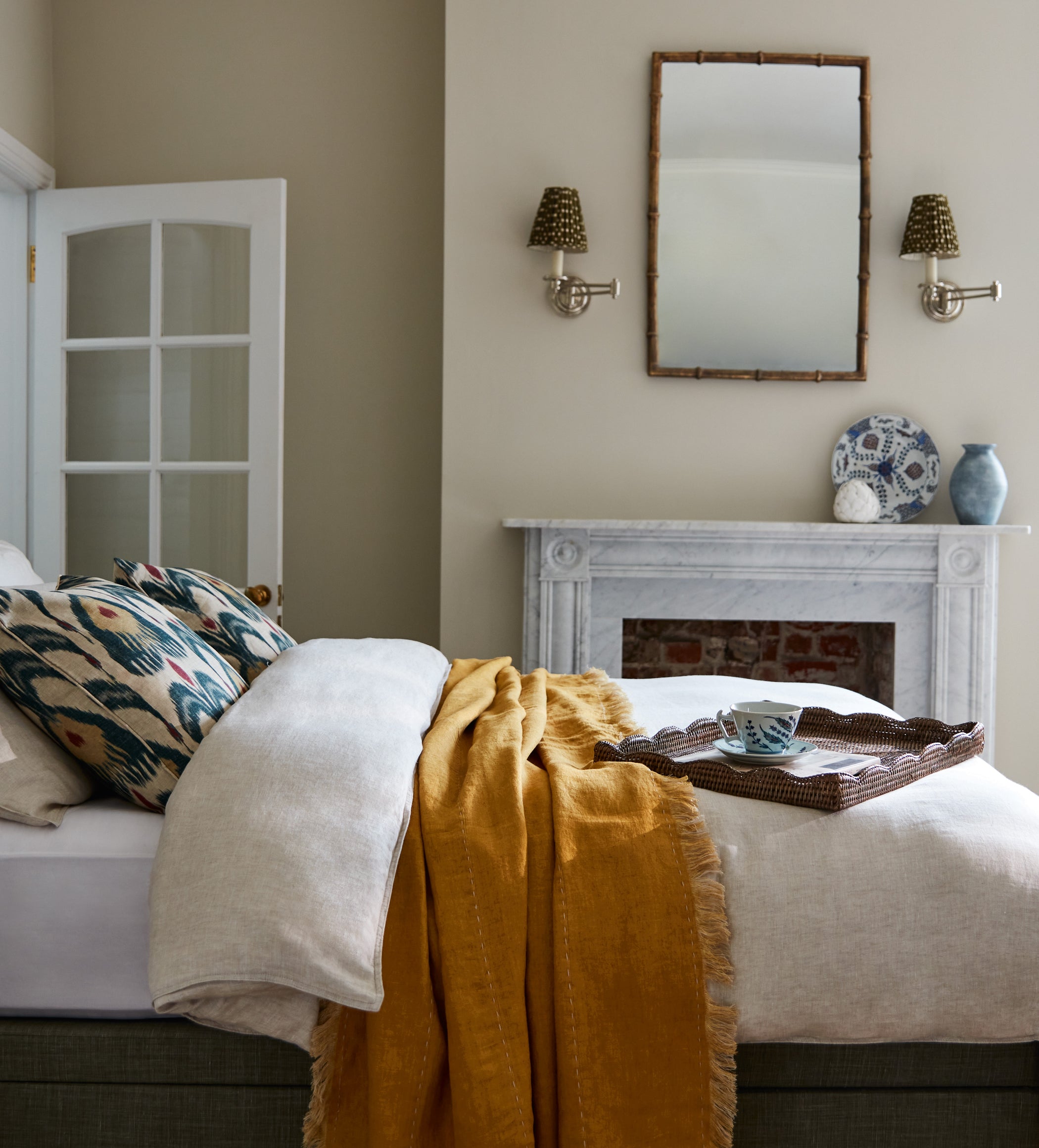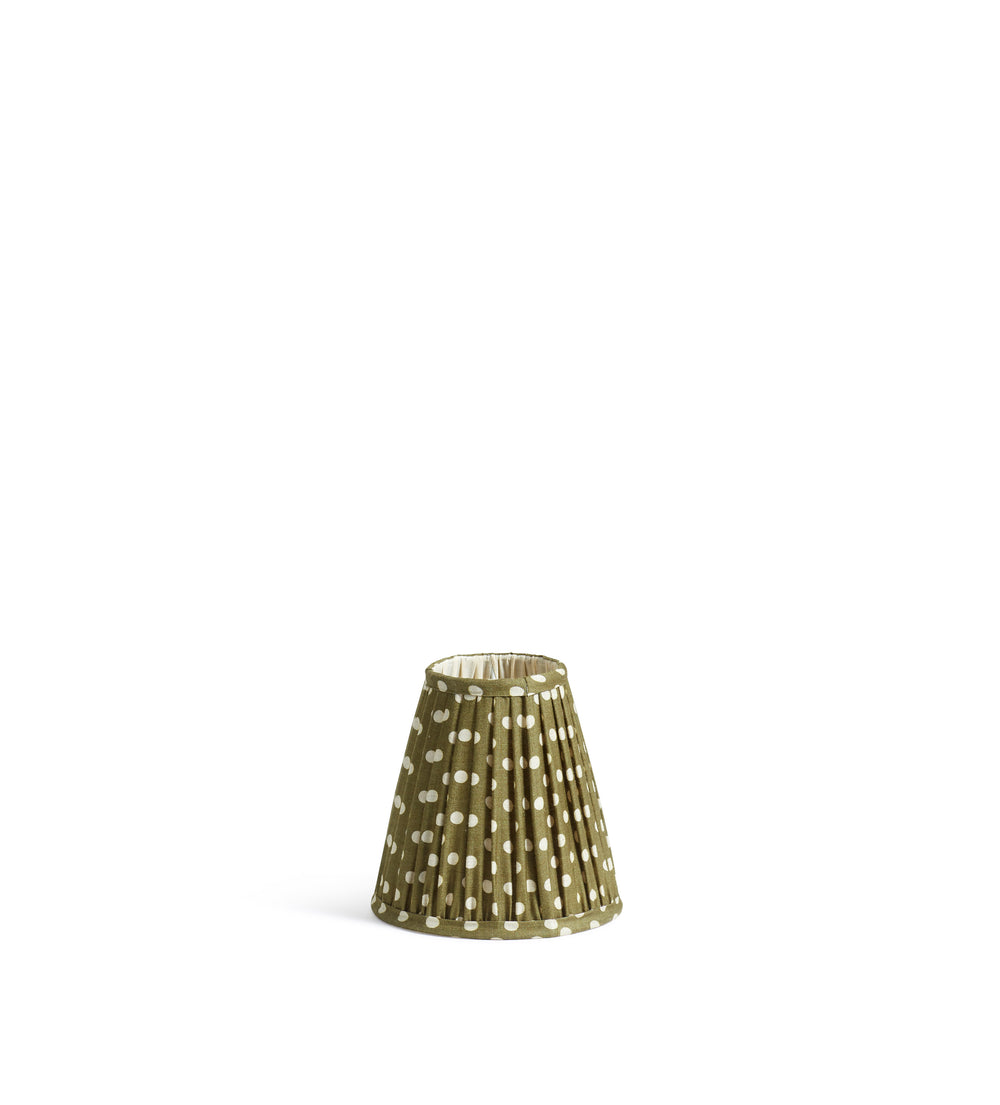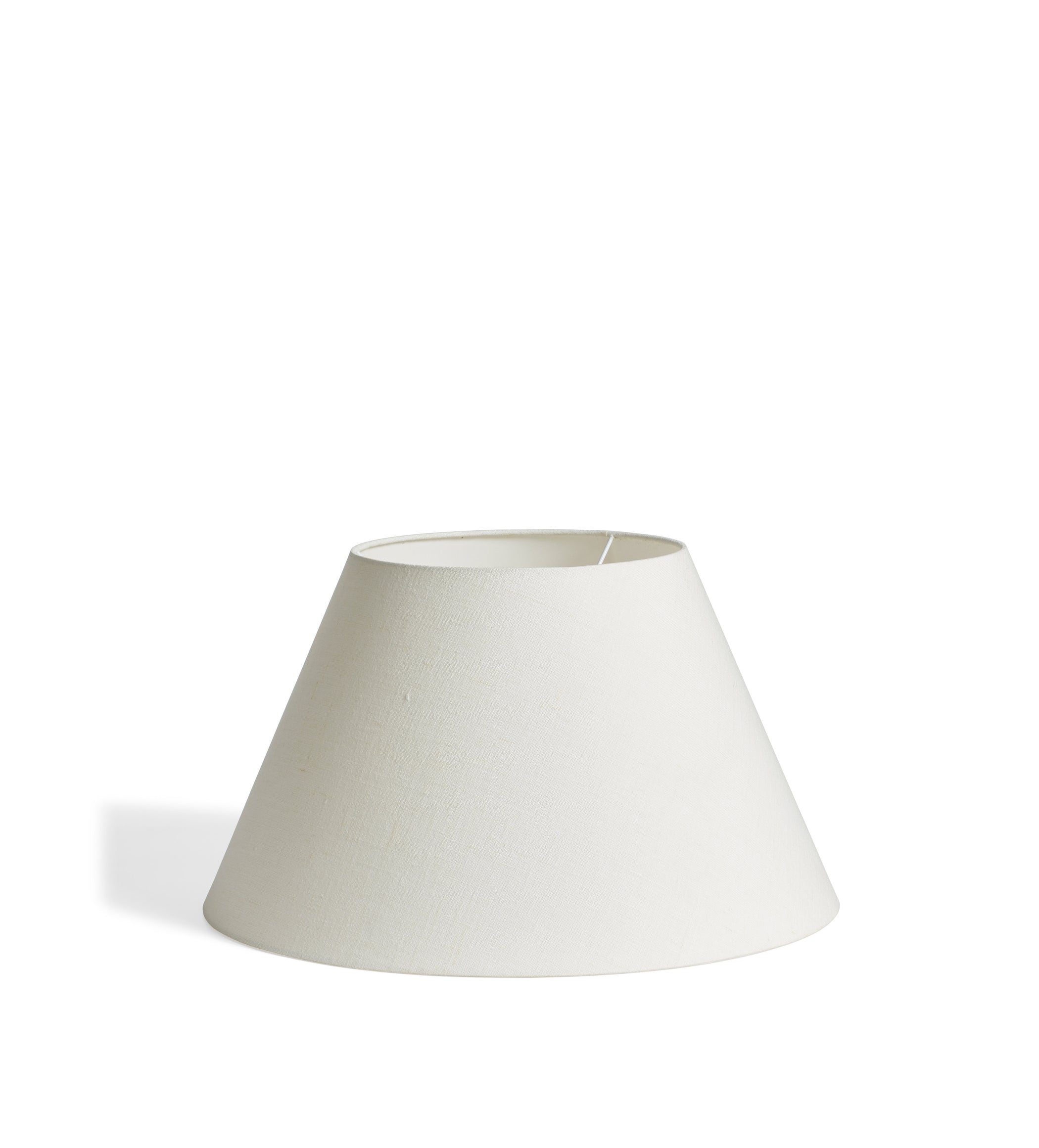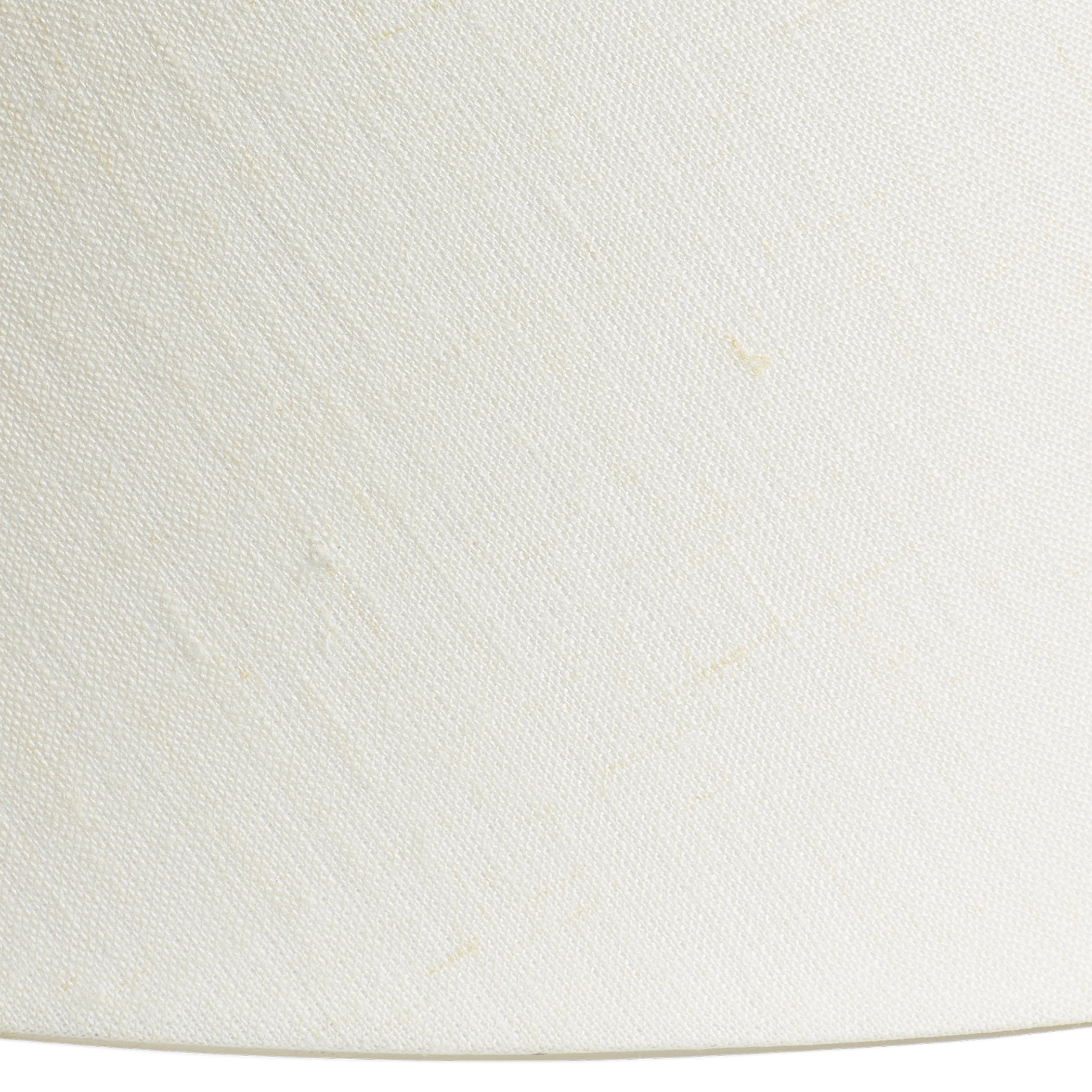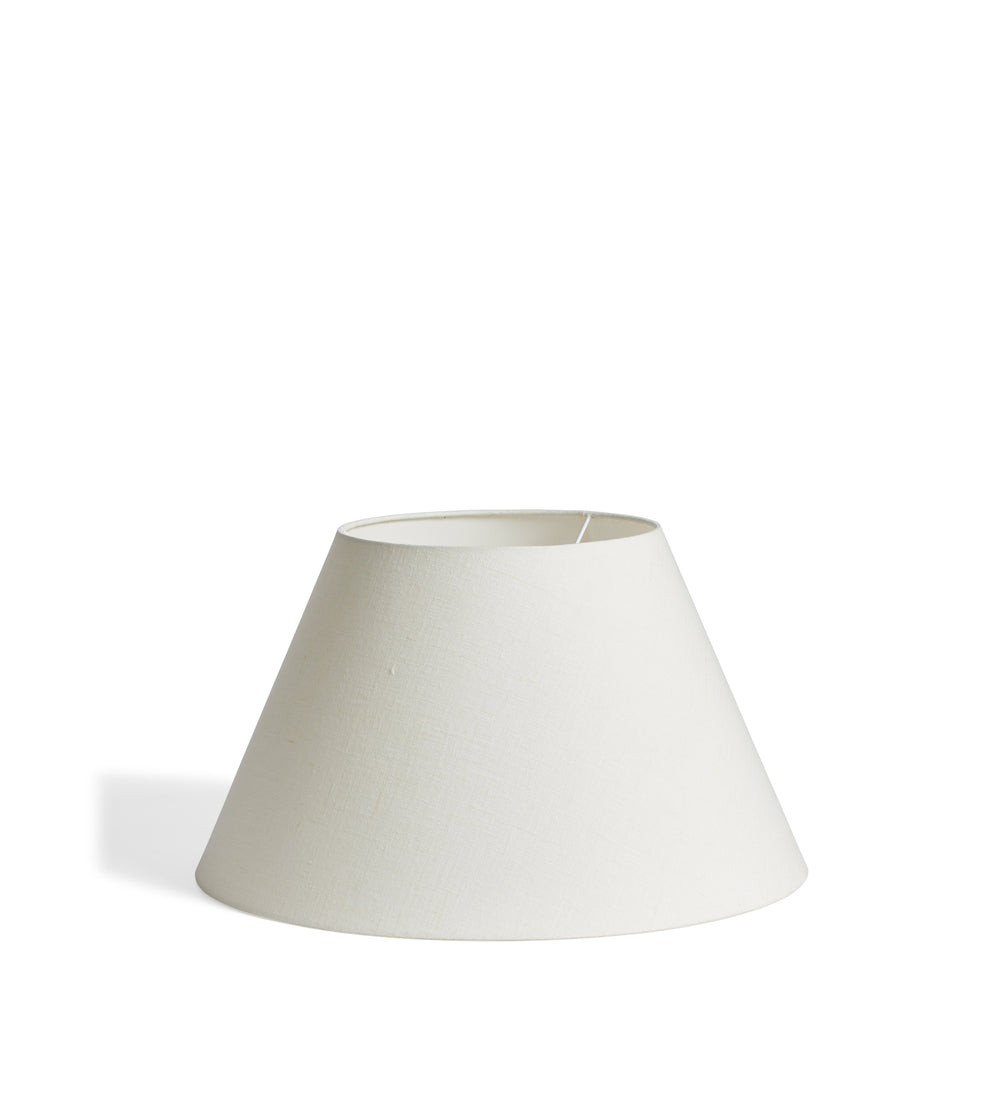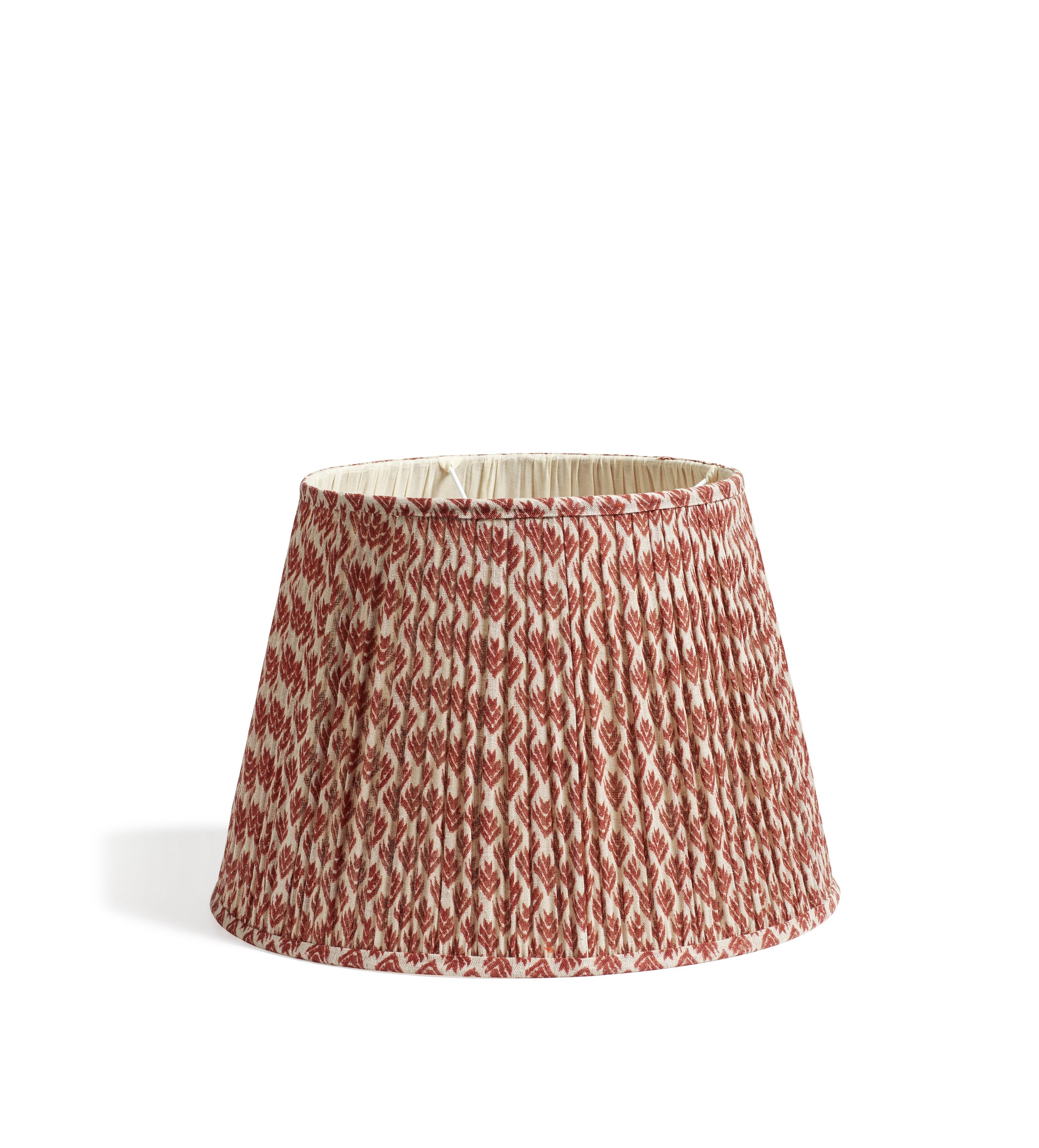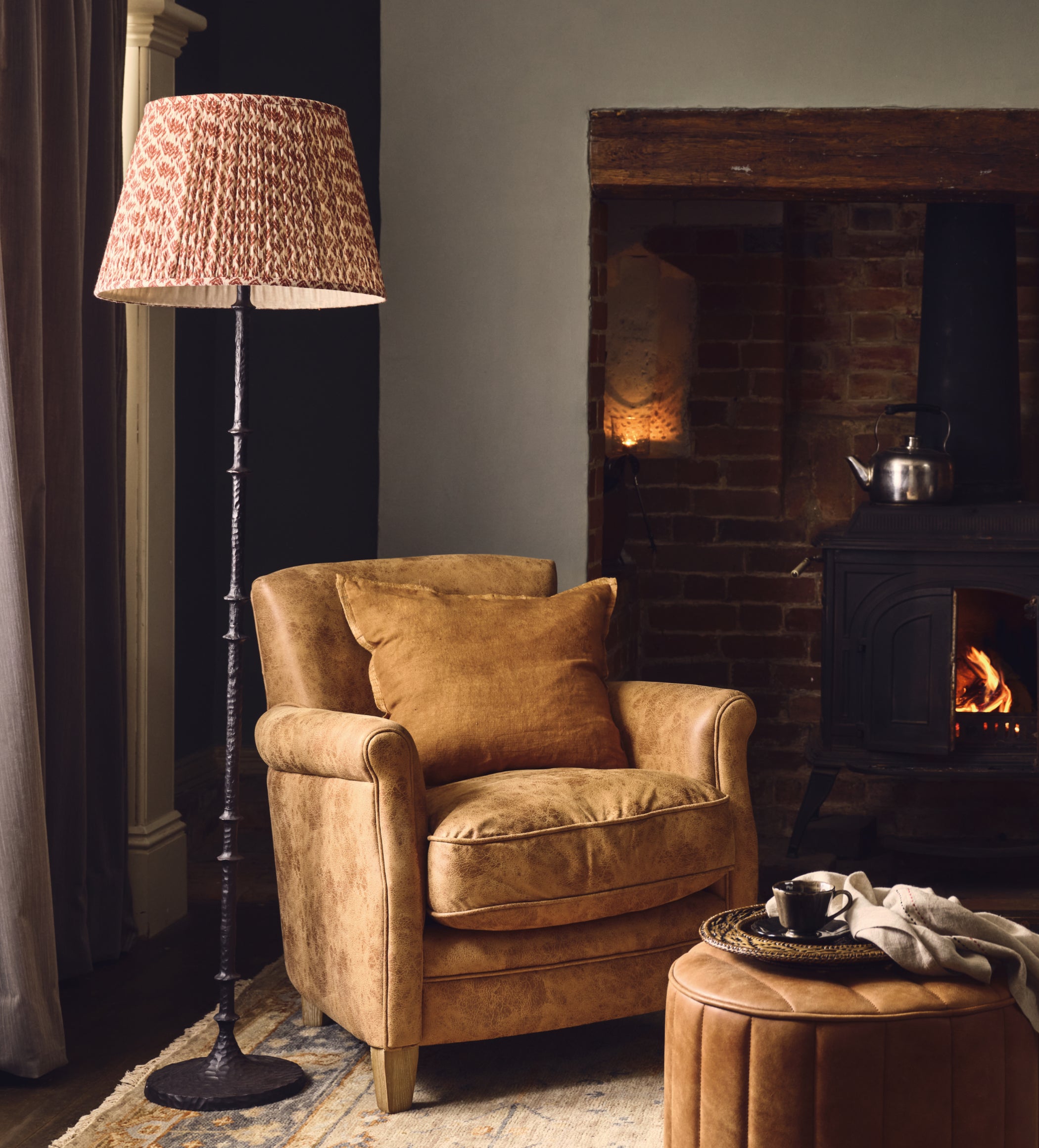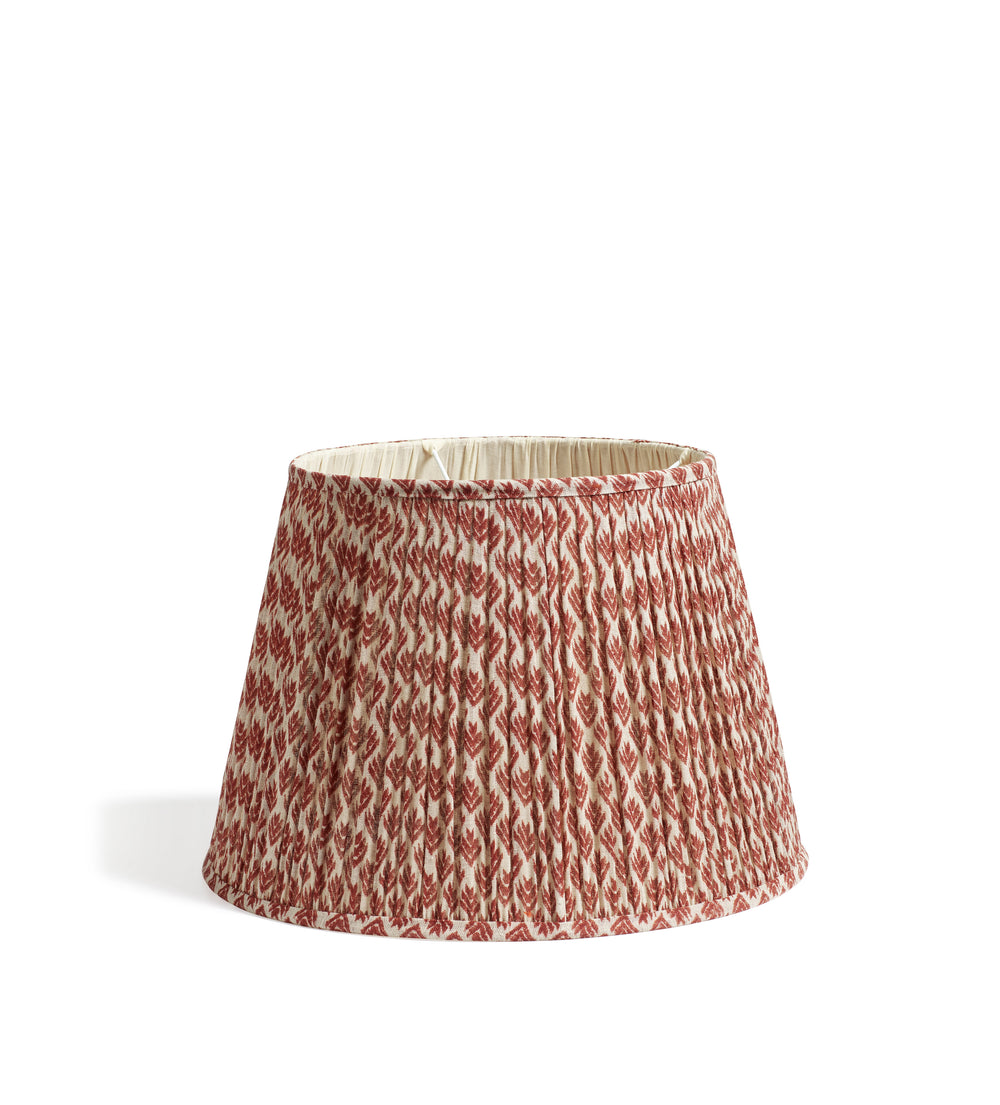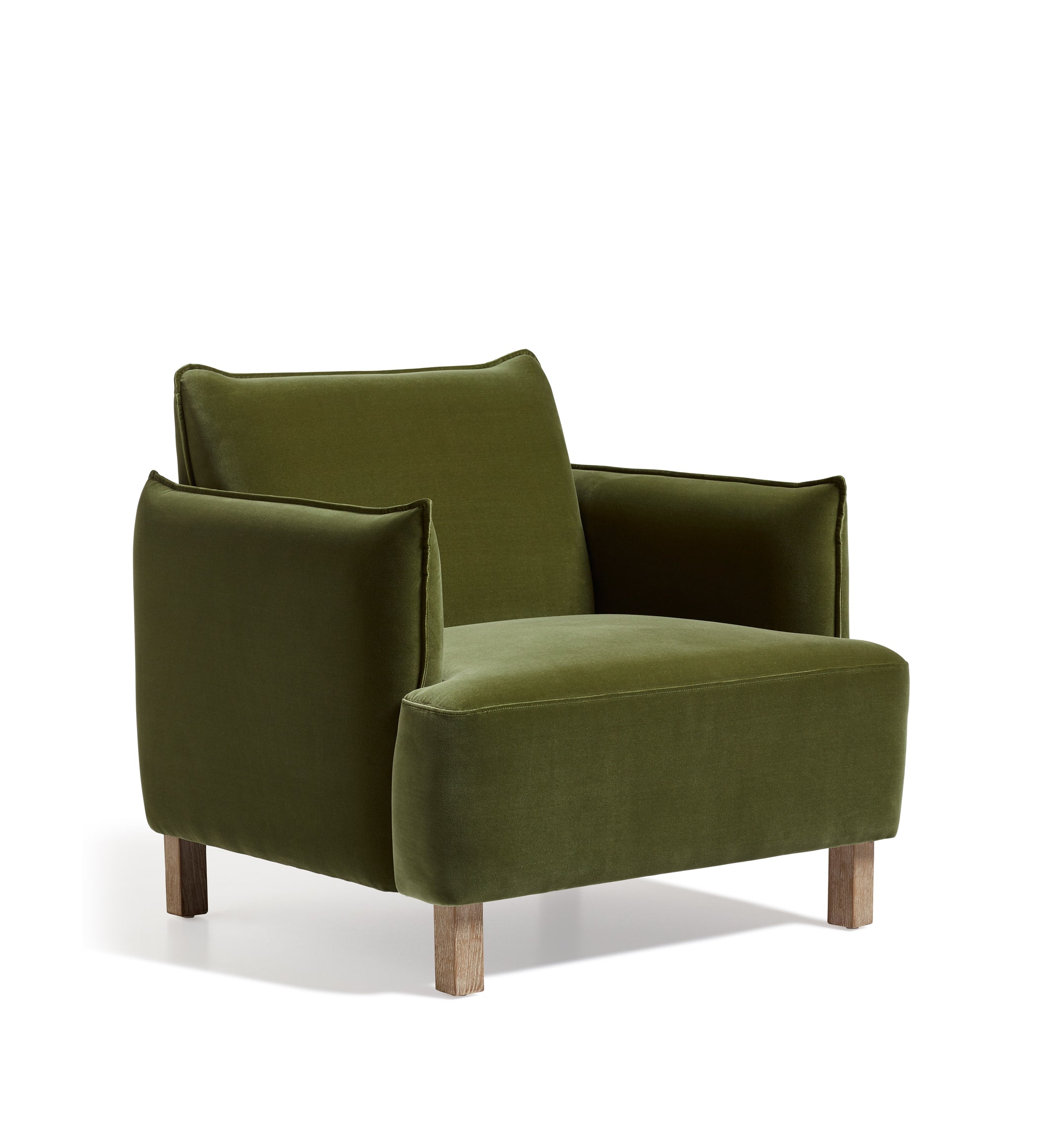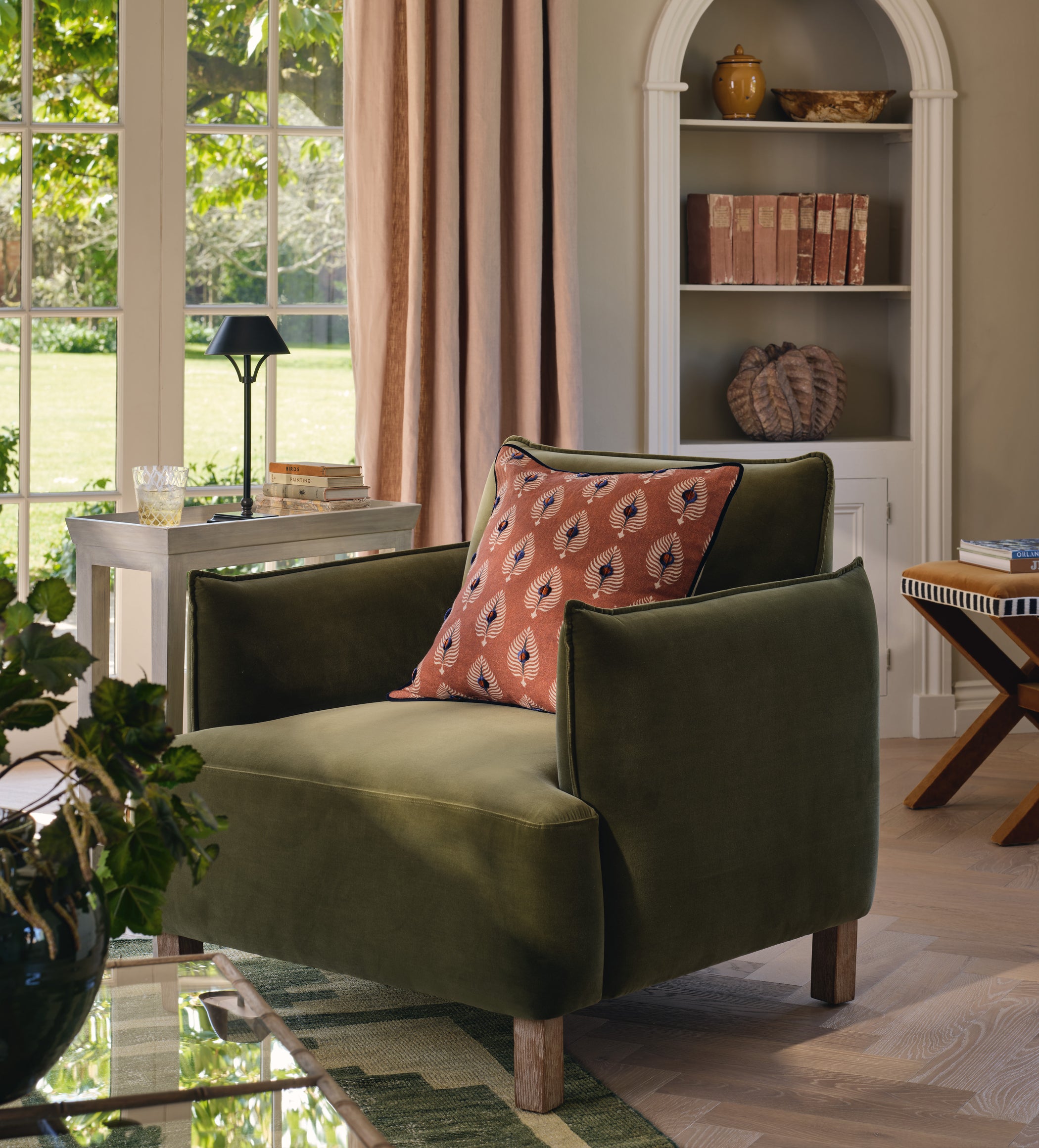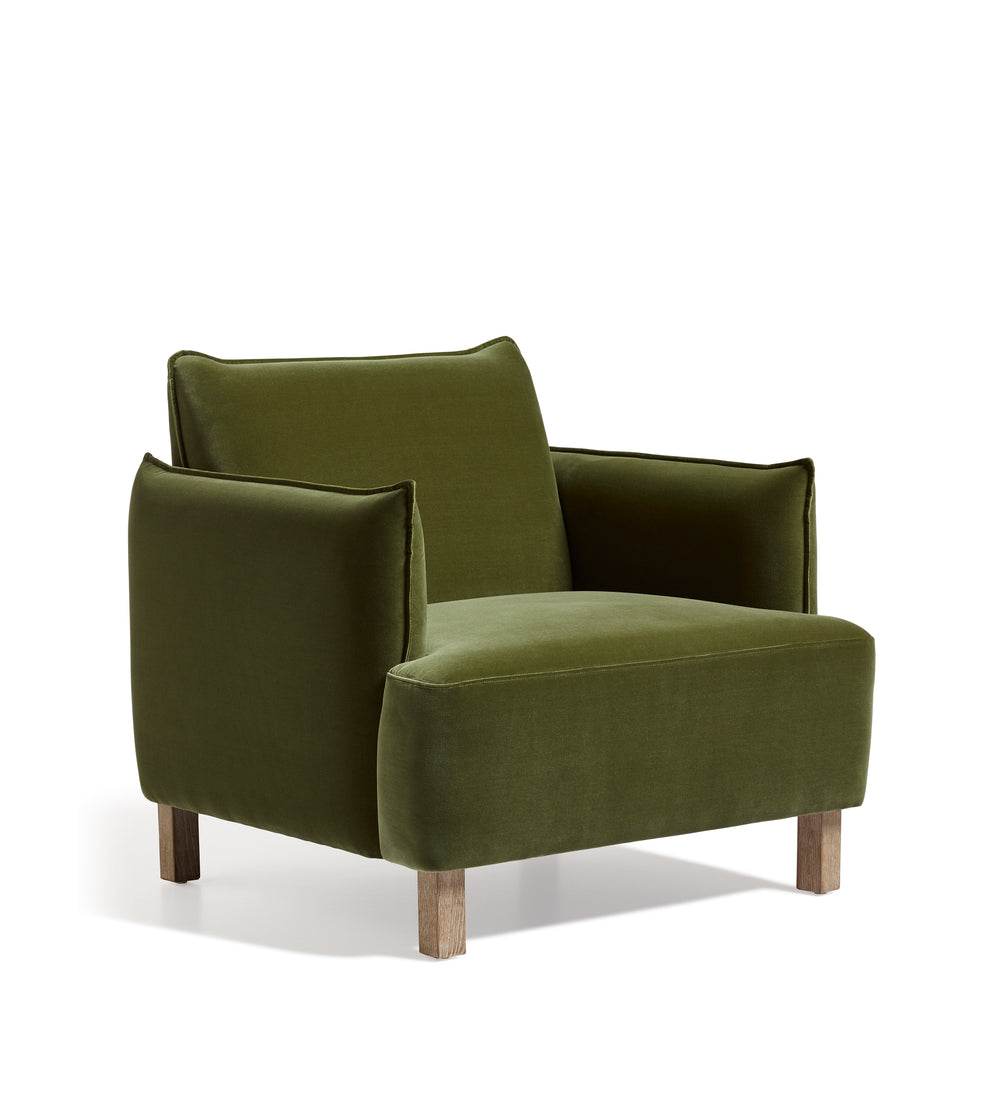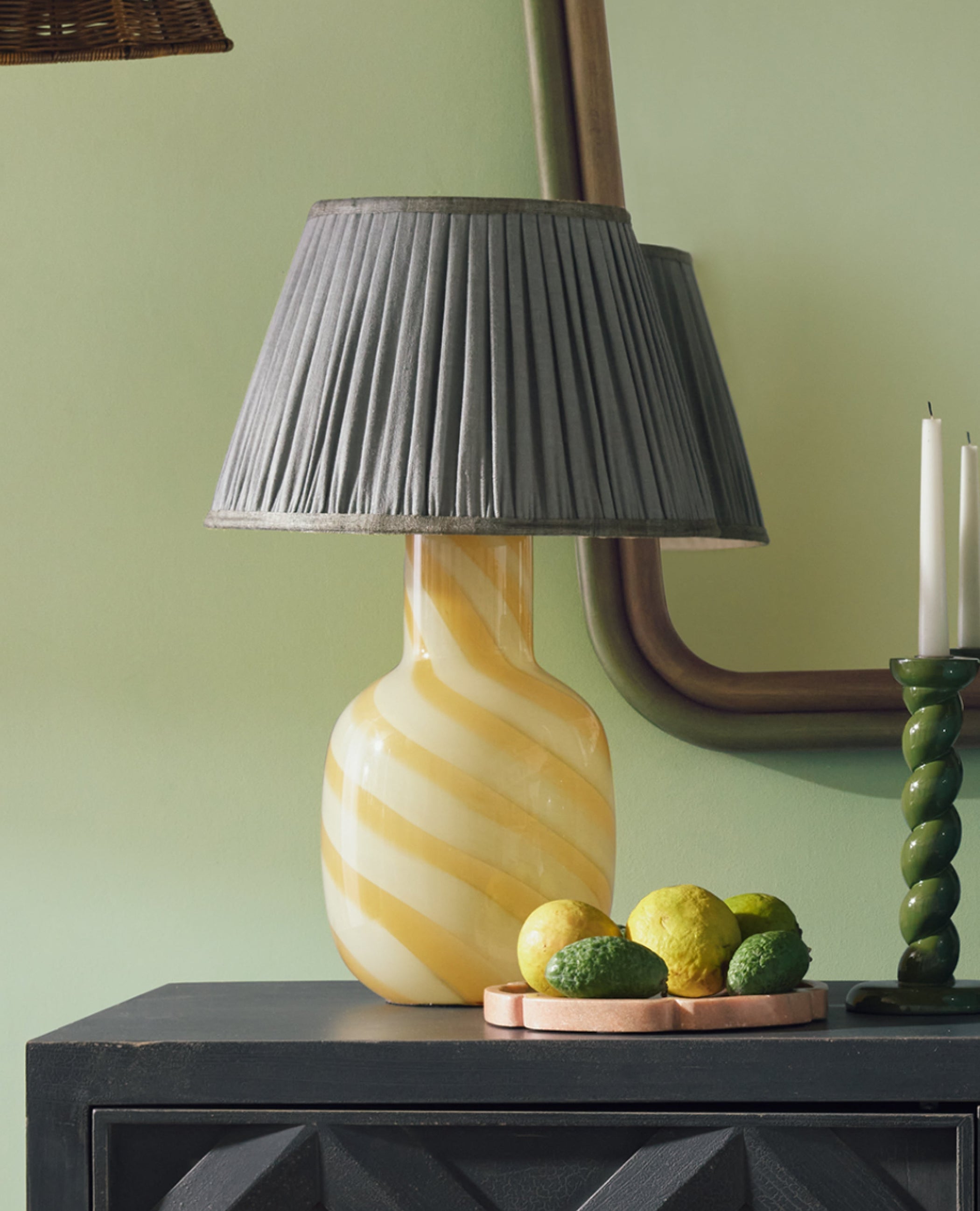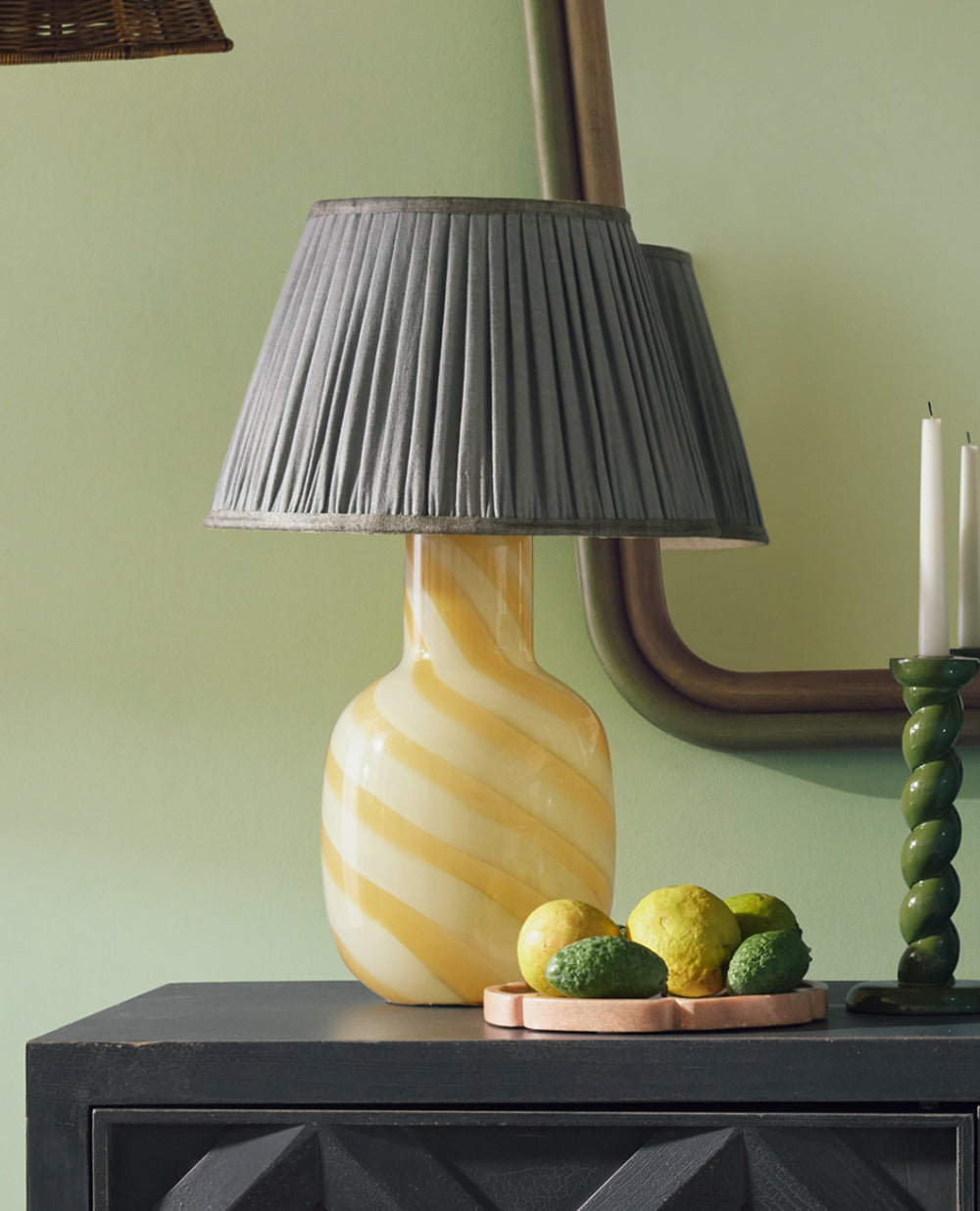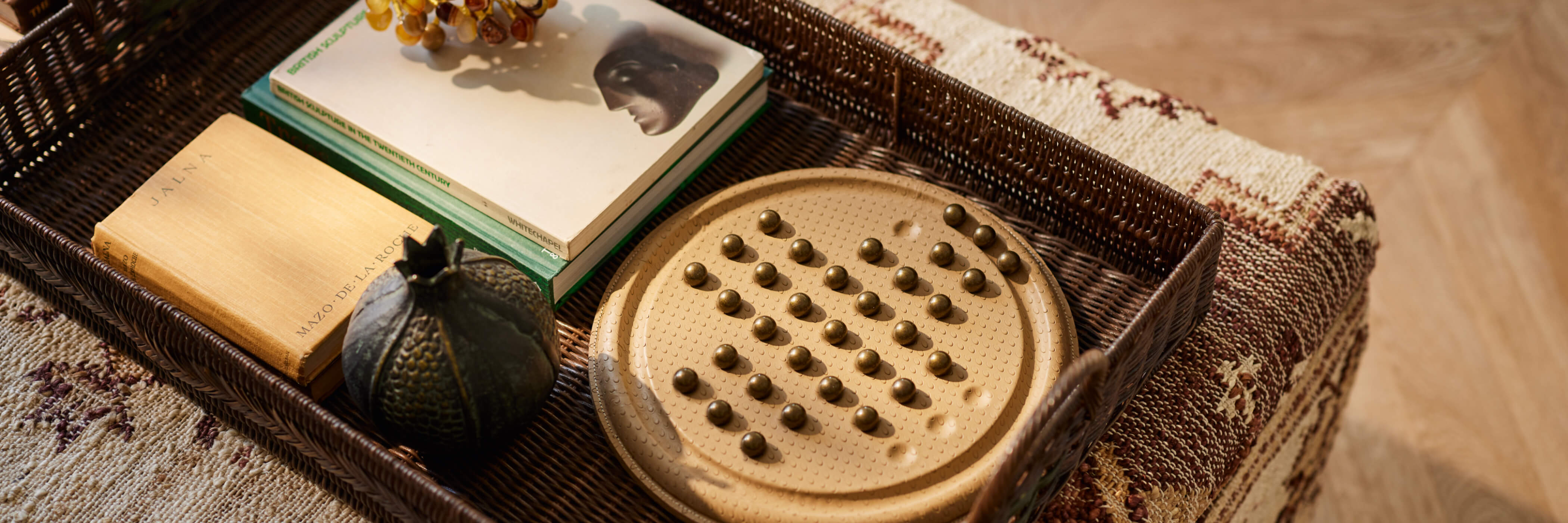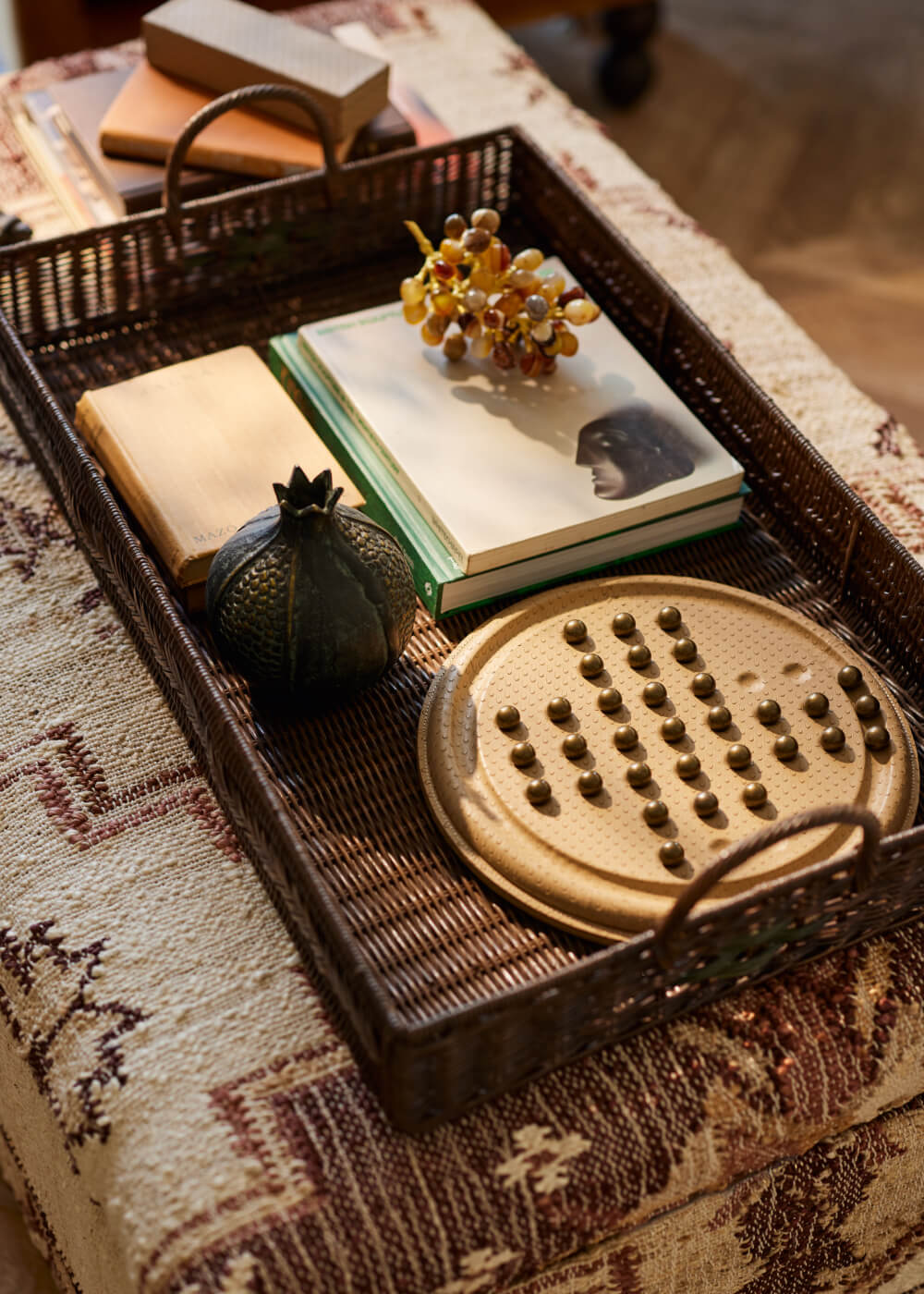How to choose the right size lampshade
Size matters when it comes to lampshades. Too small and you have an unfortunate bottom-heavy situation; too big and you really are throwing shade. Kime’s advice is to “go for the largest shade that the space will allow”, even if your lamp is between lampshade sizes. This is because the larger the shade, the more light is distributed. It seems counterintuitive, but even in smaller rooms an oversized design will create the illusion of space.
Grab your tape measure – below are some essential principles to follow when choosing the right lampshade size.
What is the best size lampshade for a table lamp?
As with all elements of a decorating scheme, getting the proportions right for a lamp/lampshade combination is vital. A table lamp shouldn’t be dwarfed by a giant shade or unbalanced by a small one.
To find the right size lampshade for a table lamp, start by measuring the height of the lamp base itself using a tape measure or ruler. When we say height, we mean from the bottom of the lamp base to the bottom of the rod – the rod and bulb holder shouldn’t be included in this measurement.
Then apply the golden rule for table lamp shades
1. The width of the lampshade should be equal to the height of the lamp base.
2. The height of the lampshade should be two thirds of the height of the lamp base.
3. The lampshade should be wider than the widest part of the lamp base.
If the dimensions of your lamp are between two lampshade sizes, choose the larger of the two – it will look better proportionally, and will distribute more light.
What size lampshade is best for a floor lamp?
As floor lamp designs are often tall and narrow, they work well with drum, empire, rectangular or square lampshades. When calculating what size to get, the maths is marginally more complicated than the measurements used to determine a table lamp pairing.
To work out what lampshade size you need for your floor lamp:
Measure the height of the lamp base – from the bottom all the way to the top of the bulb rod.
Divide by four. This will give you an approximate height for the shade itself.
Don’t forget to take into account how much room you have around your floor lamp shade, as this will also determine the width of the design. Remember, you can always go a size down if the size you’ve calculated makes the space feel tight, or it looks too close to other pieces of furniture. Trust your eye!
How high (or low) should my lampshade sit?
The height at which a lampshade sits on a lamp base can totally alter its visual effect. As a general rule, the perfect sized lampshade hides the fittings underneath without encroaching on the lamp base itself. Put simply, the shade shouldn’t take away from the design of the base.
What about the width of the lampshade – does that matter?
As we touched on with floor lamps, while the height of a lampshade is impacted by the design of the base, its width is often determined by the size of your space, and the location of the lamp itself within it. Consider where you’ll be positioning your lamp in the room – will there be plenty of space around it, or will it be in close proximity to a wall or piece of furniture, or placed near a well-used route through the room? If space is limited, it makes sense to choose a lamp base with a narrow profile and pair it with an equally narrow shade – that way it’s less likely to get knocked or damaged.






